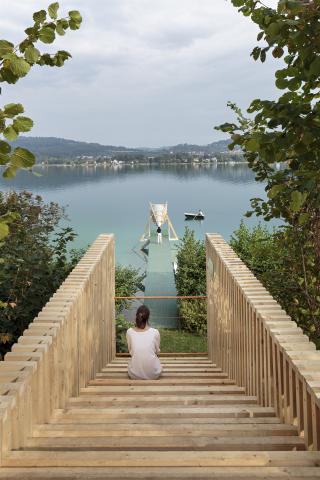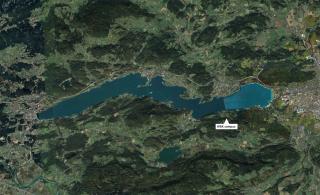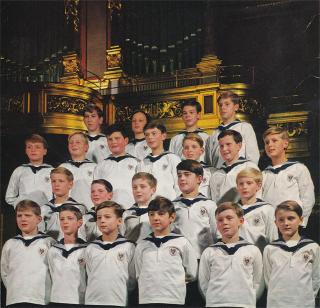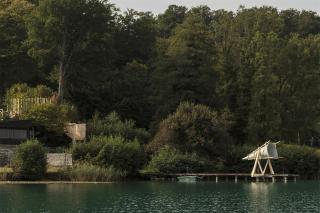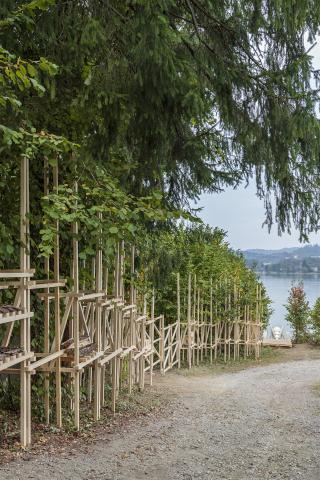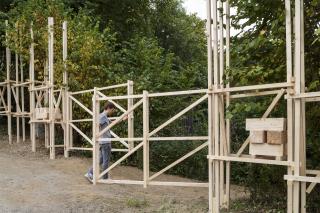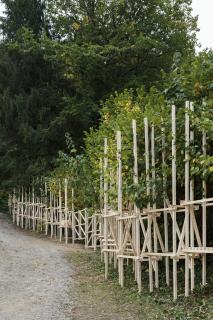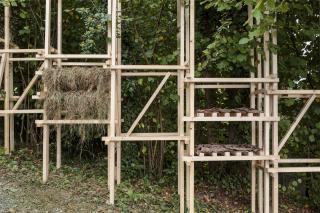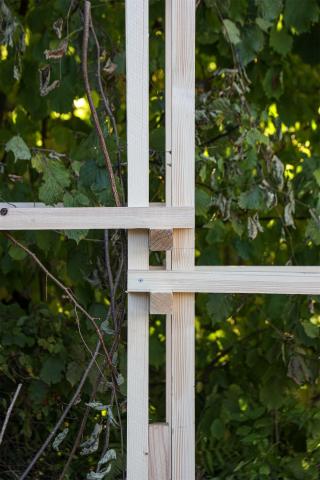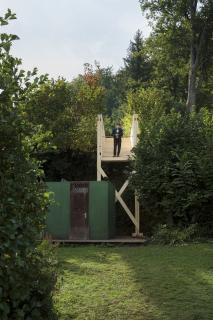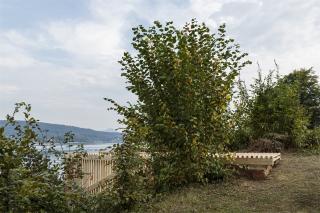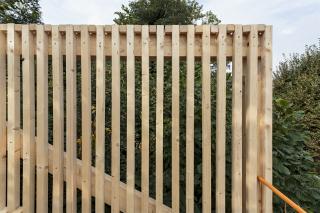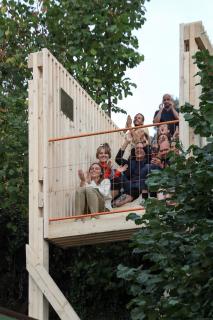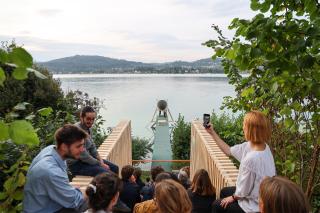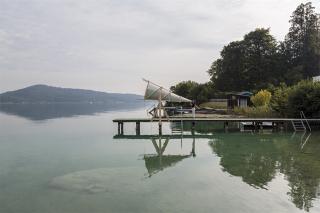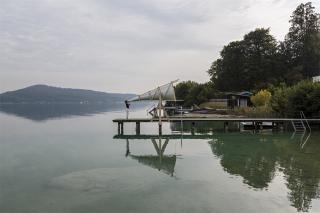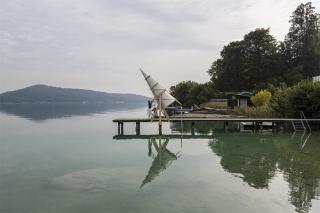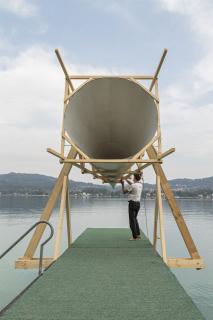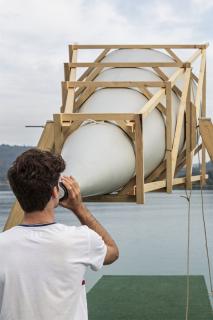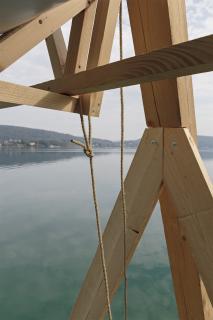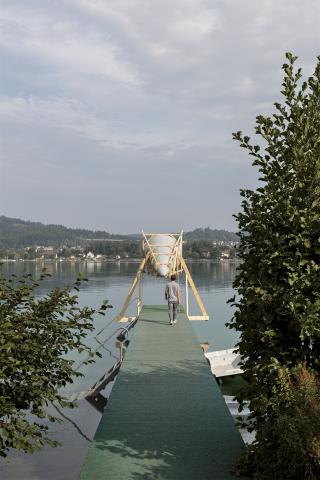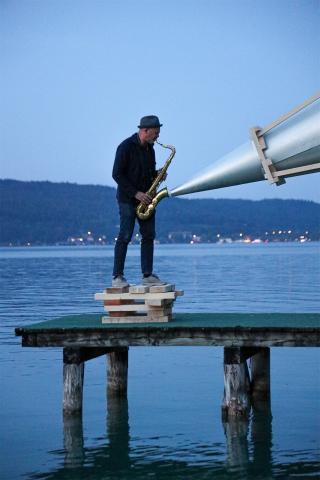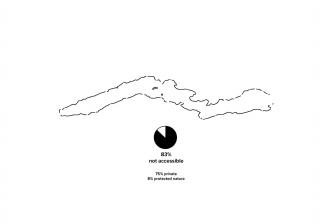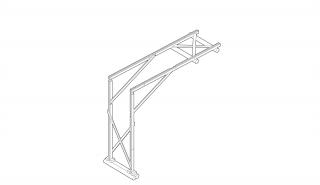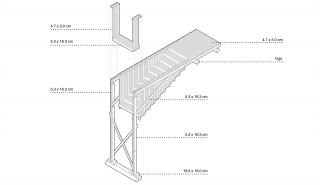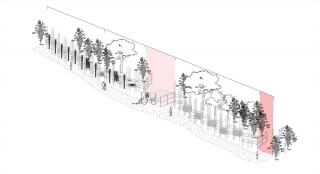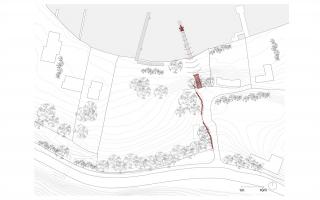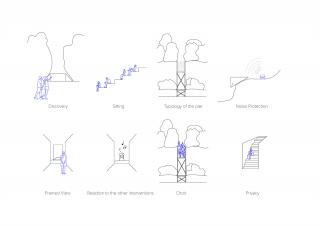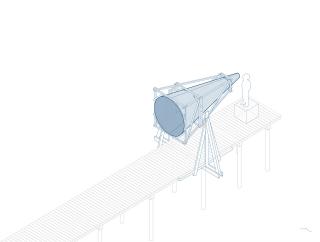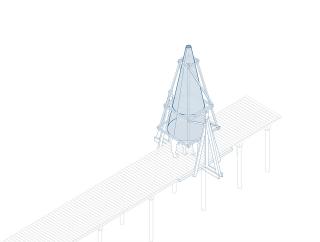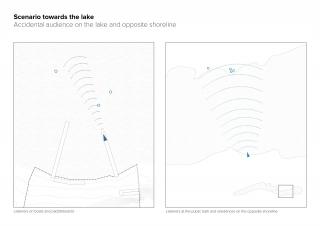▼面朝湖景
Facing the lake ? Paul Sebesta
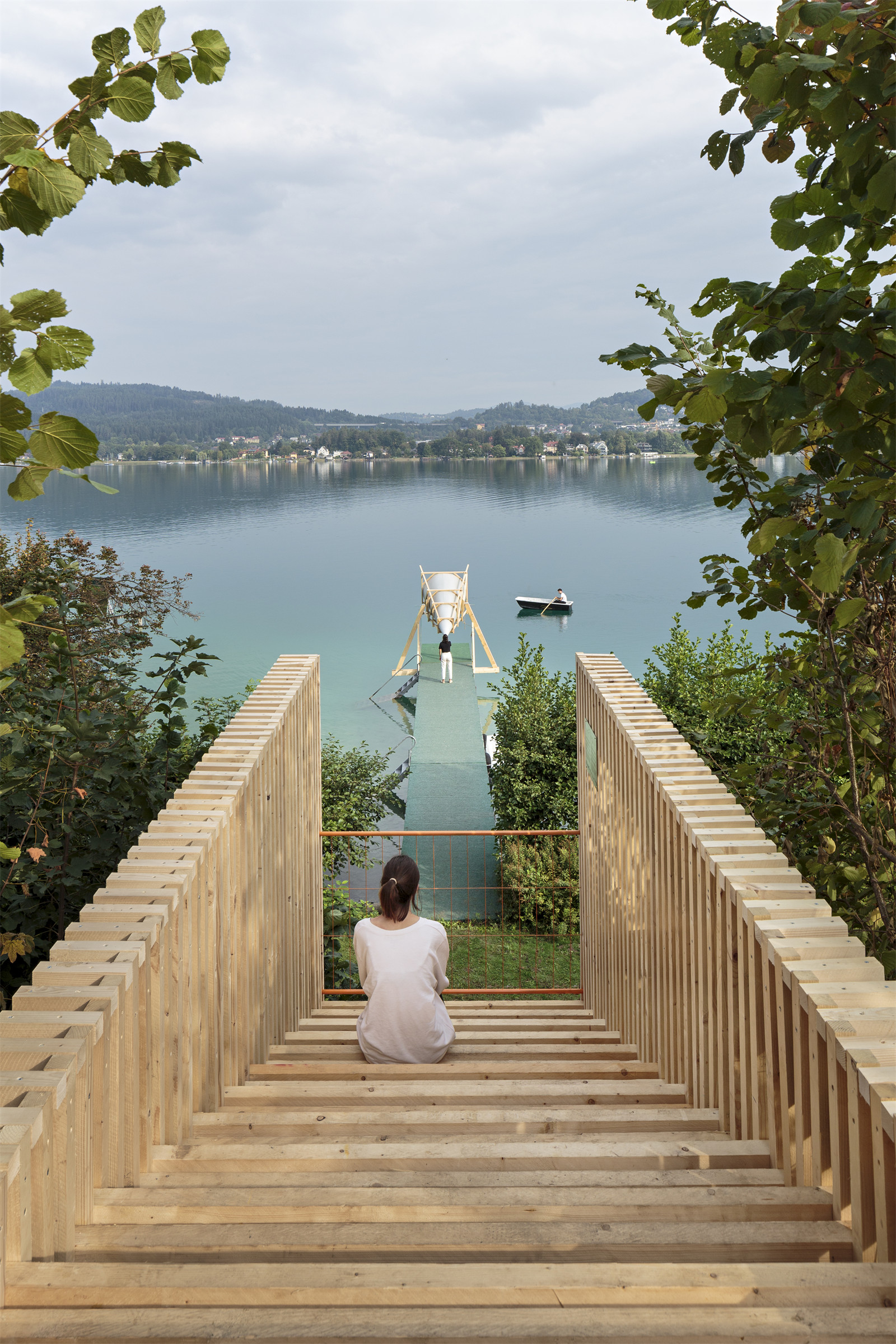
韋爾特湖83%的湖岸線都對(duì)公眾封閉。南岸邊的維也納童聲合唱團(tuán)夏令營(yíng)地,雖未被充分利用,卻是為數(shù)不多的能讓人一瞥湖景的好去處����。
該項(xiàng)目是對(duì)湖岸私有化的野蠻式發(fā)展的一種批判,也是對(duì)維也納童聲合唱團(tuán)在社區(qū)中的存在感受到忽視的一種改變�。
“交換柵欄”、“凝視”和“聲炮”�����,這三個(gè)相互關(guān)聯(lián)的建筑物設(shè)計(jì)是合唱團(tuán)社群與當(dāng)?shù)毓娭g的文化交流載體��,讓合唱團(tuán)校園能在未來(lái)成為一個(gè)全年活躍的文化場(chǎng)所�����。
在兩周的時(shí)間里����,學(xué)生們?cè)O(shè)計(jì)并建造了三個(gè)建筑物�,以解決和批判奧地利韋爾特湖的高度私有化問(wèn)題�����。
W?rthersee has 83% of its shoreline inaccessible to the public. At the same time, located on the lake’s south shore, the Vienna Boys’ Choir Summer Residence is an underused property and one of the last remaining places with an opportunity to open up for the people.
The project critically addresses the lake’s wild privatisation and the current unawareness of the cultural presence of the Vienna Boys’ Choir in the local community.
The three interconnected interventions: ‘Exchange Fence’, ‘Stare!’ and ‘Sound Cannon’, offer tools for a new cultural exchange between the Boys’ Choir community and the local general public, capable of addressing the future transformation of the Vienna Boys Choir Campus into an all-year-round cultural venue.
Over two weeks, students design and build a series of three architectural interventions to address and critique the hyper-privatised nature of Austria’s Lake W?rthersee.
背景
Context
▼韋爾特湖現(xiàn)狀
Status of W?rthersee ? AA nanotourism archive
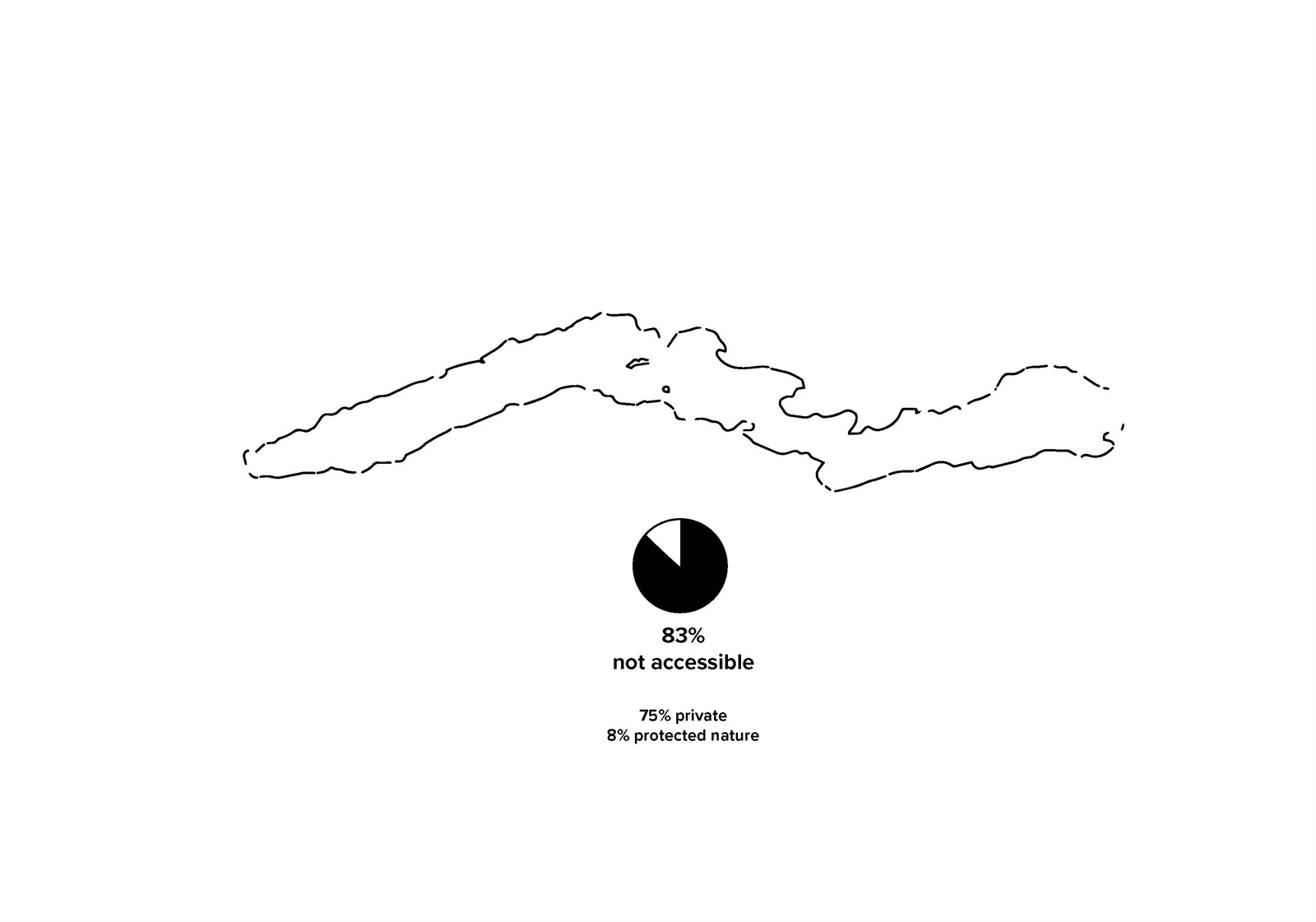

韋爾特湖是奧地利最著名的湖泊之一����。歷史上��,它一直是傳統(tǒng)木工產(chǎn)品的運(yùn)輸碼頭���。自上個(gè)世紀(jì)以來(lái),逐漸受到度假者的青睞���。如今,過(guò)去家庭式的浪漫民宿正被大量的公寓和別墅所取代�,變成僅為富人們享有的一片湖景,這導(dǎo)致 83% 的湖畔都是公眾無(wú)法進(jìn)入的�����!
當(dāng)然����,仍有一塊隱秘的寶地留存著,是所剩無(wú)幾的�����、能讓公眾走近韋爾特湖的地塊之一�。維也納童聲合唱團(tuán)夏令營(yíng)地坐落于湖的南岸���,是一塊有待充分開發(fā)的地方。合唱團(tuán)的男孩們每年僅在暑假的兩個(gè)月來(lái)到這里�,避暑及練習(xí)歌唱技巧��,而一年中的其余時(shí)間�����,6英畝大的校園被精心維護(hù)著���,卻無(wú)人使用�����。
W?rthersee is one of Austria's most prominent lakes. Historically, it has served as a transport infrastructure for traditional woodworking trades, while it has developed into a place of high interest for holidaymakers in the last century. Today, once family-run small romantic hotels are giving way to audacious developments of generic apartment blocks and villas for wealthy individuals who want the piece of the lake's shore for themselves only. Consequently, a staggering amount of 83% of the lake's perimeter is publicly inaccessible!
But there is a hidden gem - one of the last remaining plots with potential public access to the lake. Along the lake's fenced-off south perimeter road, Vienna Boys' Choir Summer Residence Campus is a place of underused potential. The boys practice their singing skills and spend time on the estate for two summer months per year only, while the rest of the year, the 6 acres of the Campus, remain empty and unoccupied - maintained for no one.
▼維也納童聲合唱團(tuán)
Vienna Boys' Choir ? WSK
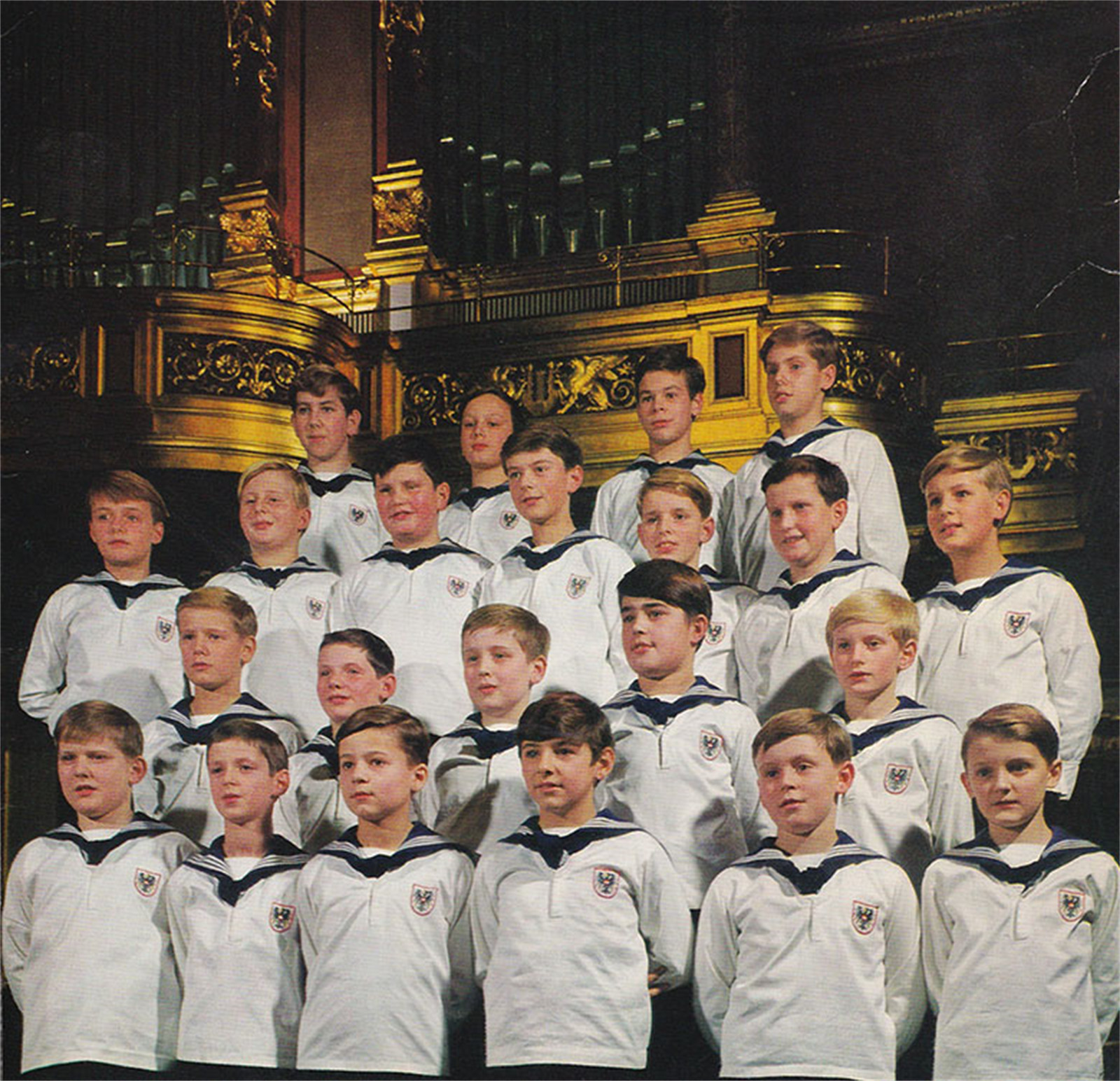
雖然維也納童聲合唱團(tuán)是世界最著名的合唱團(tuán)體之一�����,鄰近的韋爾特社區(qū)對(duì)他們的存在卻知之甚少��。他們的身份和高度專業(yè)的才能被隱沒在校園茂密的植被之后。
曾任維也納童聲合唱團(tuán)歌手�、現(xiàn)任管理委員會(huì)成員的建筑師沃爾克·迪恩斯特�����,認(rèn)識(shí)到這座莊園的獨(dú)特機(jī)會(huì)及校園升級(jí)的必要性����。他邀請(qǐng)AA設(shè)計(jì)公司來(lái)一起研究���、實(shí)驗(yàn)并創(chuàng)建模型�,以對(duì)校園特色進(jìn)行有意義的漸進(jìn)改造�����,從而為早已陳舊的運(yùn)管注入新鮮的內(nèi)容����。
為了做好教學(xué),AA設(shè)計(jì)公司的項(xiàng)目負(fù)責(zé)人���、建筑師 Aljosa Dekleva 邀請(qǐng)了英國(guó)同事 Thomas Randall-Page 來(lái)共同指導(dǎo)該學(xué)校的韋爾特課題�。他們與項(xiàng)目助理Amanda Sperger���、Jakob Travnik 和導(dǎo)師Andreas Arndt合作���,教授來(lái)自不同背景的15名年輕建筑師和建筑學(xué)生��,并展開合作��,研究如何將未充分利用的維也納童聲合唱團(tuán)校園變成一個(gè)全年開放的文化場(chǎng)所�。
Although the Vienna Boys' Choir is a world-famous high culture of choir singing, the neighbouring W?rthersee community have little knowledge of their presence. Their identity and highly specific skills are hidden behind the thick greenery of the Campus.
Former Vienna Boys' Choir singer and current management board member architect Volker Dienst identified the unique opportunity of the property and the necessity for the Campus' transformation. He opened up the discussion for possible changes in their rusted routine by inviting the AA nanotourism Visiting School to research, experiment and propose prototypes for a meaningful and gradual transformation of the campus' nature.
In preparation for the course, the Programme Head of the AA nanotourism Visiting School, architect Aljosa Dekleva, has invited a British colleague Thomas Randall-Page to co-mentor the W?rthersee edition of the school. Teamed up with programme assistants Amanda Sperger, Jakob Travnik and tutor Andreas Arndt they taught and worked together with fifteen young architects and architecture students from various international backgrounds on how an underused Vienna Boys Choir Campus can turn into an all-year-round cultural venue.
▼韋爾特湖裝置設(shè)計(jì)
Three interconnected interventions of W?rthersee ? Paul Sebesta
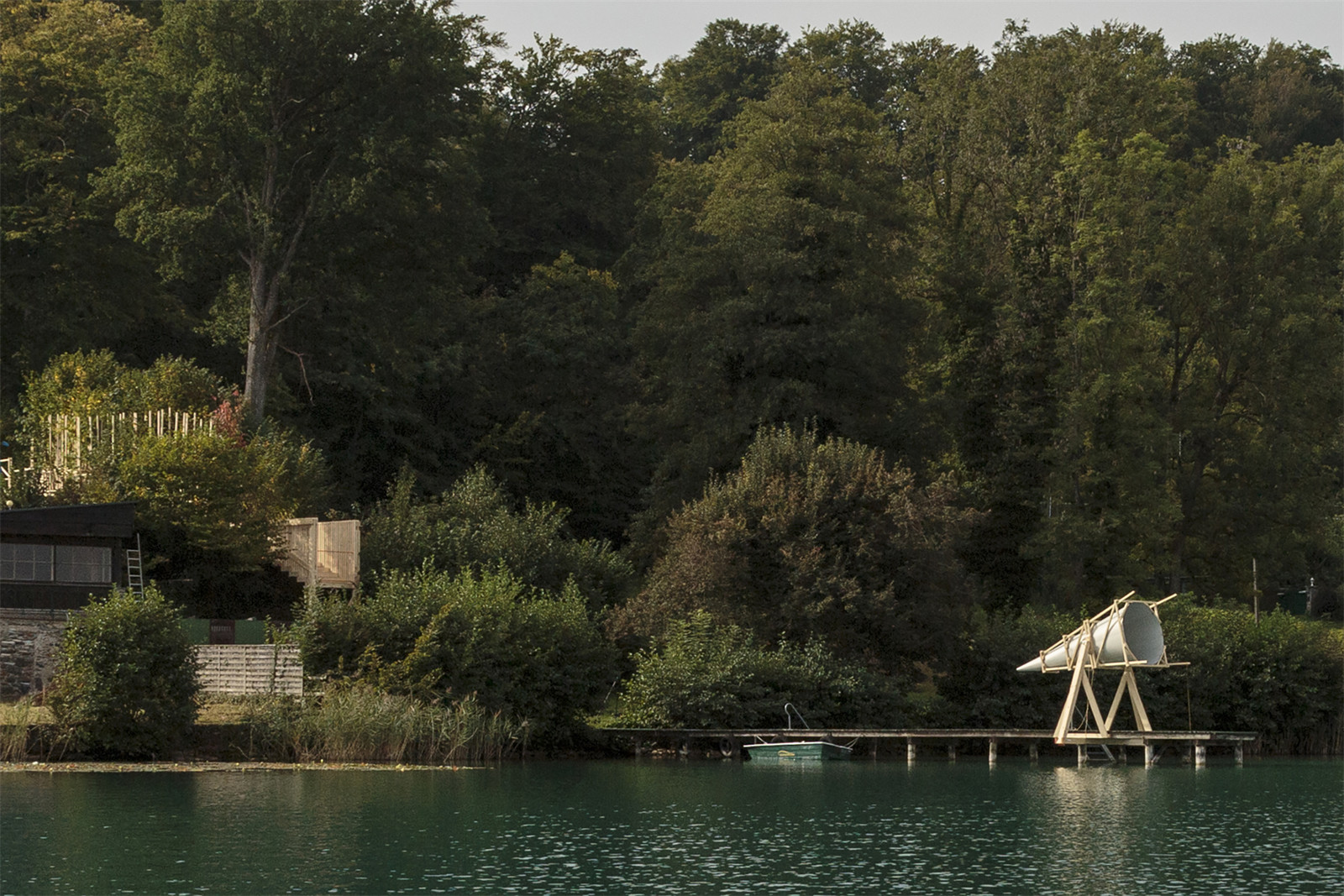
在為期兩周的緊張暑期班中��,師生調(diào)查了校園現(xiàn)有的自然與文化特征����。 在3個(gè)舊有的建筑物上,各建造了一座概念性的建筑裝置����,并為參觀者和維也納童聲合唱團(tuán)未來(lái)可能的發(fā)展內(nèi)容,提出了有關(guān)活動(dòng)和策略上的建議��。 這些建筑物是朝著更大目標(biāo)邁出的第一步�,即找到可行的校園發(fā)展戰(zhàn)略。該戰(zhàn)略將繼續(xù)以舉辦維也納童聲合唱團(tuán)成員的夏季活動(dòng)為主�,同時(shí)將其擴(kuò)大成一個(gè)區(qū)域性的、多學(xué)科的新世紀(jì)文化校園����,并向公眾全年開放����。
In an intense two-week summer school, they investigated the Campus's existing natural and cultural specificities. They developed one-to-one scale conceptual on-site intervention in the form of three built installations with events and strategies that proposed possible Campus' future developments for the visitors and members of Vienna Boys' Choir alike. This intervention is the first step towards the larger aim to find a responsible development strategy of the Campus that would continue to host the principal private activities of the Vienna Boys Choir members during summers, while it would also expand its role to a regional, multi-disciplinary cultural campus of the 21st century, open to the public and operational throughout all seasons.
▼韋爾特湖裝置設(shè)計(jì)
Three interconnected interventions of W?rthersee ? AA nanotourism archive
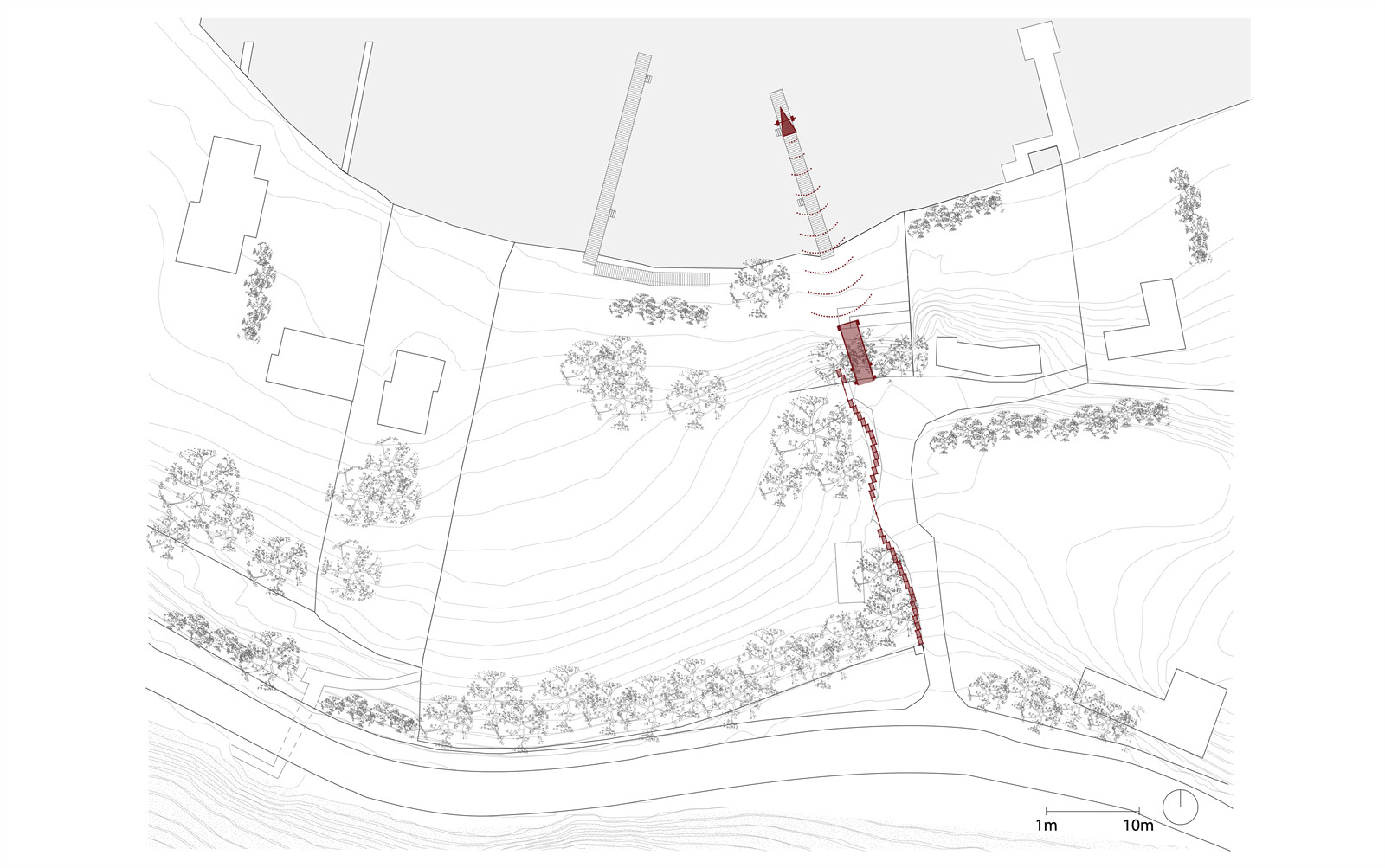
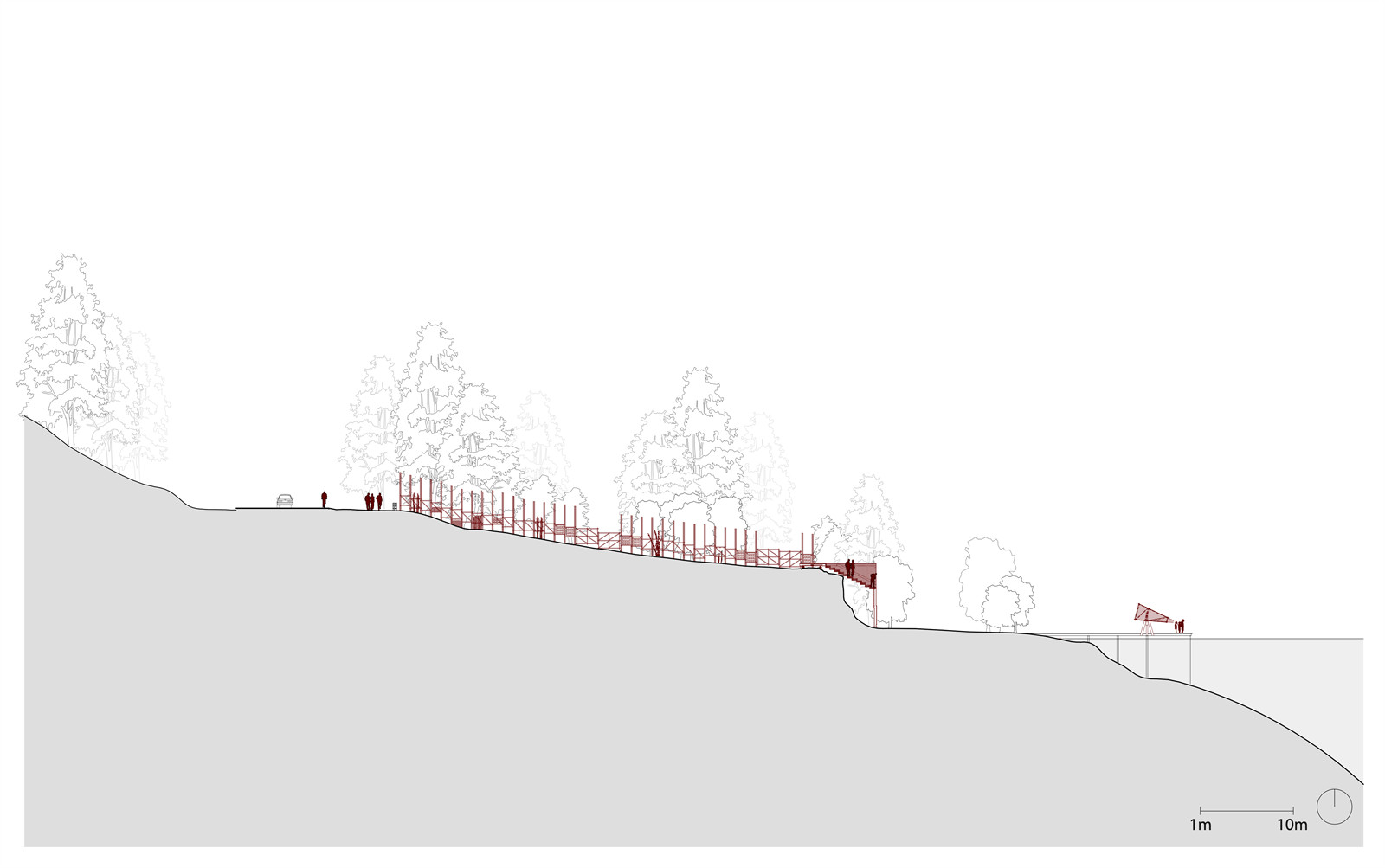
該團(tuán)隊(duì)創(chuàng)建了一個(gè)從概念到建造的創(chuàng)新設(shè)計(jì)���,由三個(gè)獨(dú)立但相互關(guān)聯(lián)的建造物組成?�!敖粨Q柵欄”批判性地拒絕了傳統(tǒng)分割式的柵欄�,向著增強(qiáng)社區(qū)凝聚力的多功能裝置方向進(jìn)行探索?���!澳暎 ?是對(duì)湖岸過(guò)度私有化的控訴�����,提供了一個(gè)私人資產(chǎn)供公眾使用的范例�。“聲炮”則為童聲合唱團(tuán)提供了向公眾表演的機(jī)會(huì)��,并能邀請(qǐng)當(dāng)?shù)匾魳?lè)家來(lái)一起合作�����,從而彌補(bǔ)維也納童聲合唱團(tuán)在當(dāng)?shù)厣鐓^(qū)文化中受忽略的問(wèn)題。
The team has created an architectural intervention from concept to construction consisting of three individual but correlated structures. The 'Exchange Fence' critically addresses the traditional type of the dividing fence and explores its transformations into a socially cohesive multifunctional element of the local community. The 'Stare!' critiques the over-privatisation of the lake's shores and offers a working example of privately owned public space. And the 'Sound Cannon' challenges the lack of cultural presence of the Vienna Boys' Choir in the local community by offering the opportunity for the Boys' Choir to perform for the public and invite local musicians for collaboration.
交換柵欄:好柵欄塑造好鄰里
Exchange Fence:Good Fences Make Good Neighbours
▼交換柵欄
Exchange Fence ? Paul Sebesta

既是柵欄��,又是貨架�,“交換柵欄”通過(guò)鼓勵(lì)物品交換來(lái)功能化公共邊界。
Part fence, part store, ‘Exchange Fence’ mediates the public boundary by stimulating material exchanges.
▼交換柵欄
Exchange Fence ? AA nanotourism archive
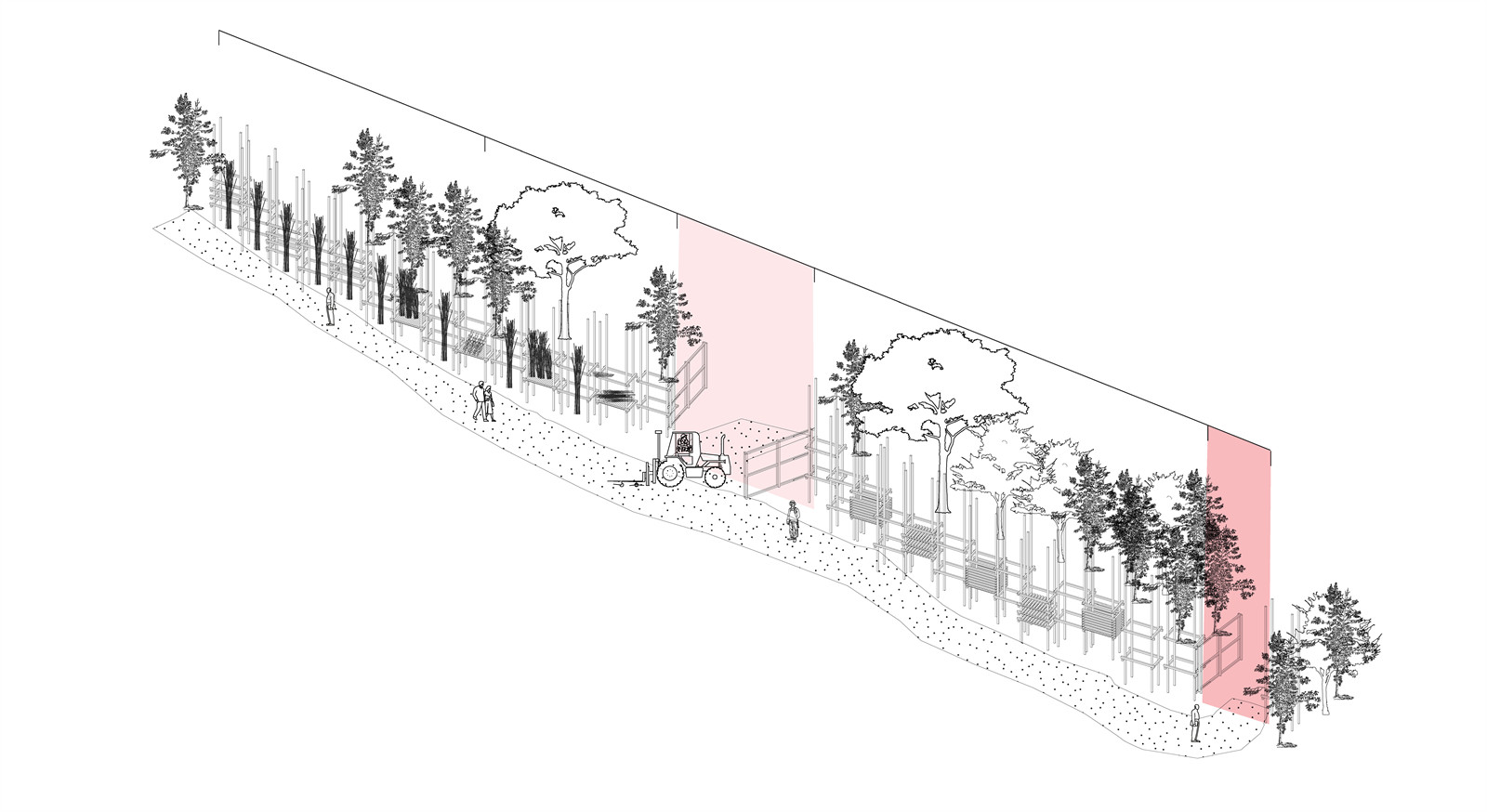
為了促進(jìn)與鄰近社區(qū)的交流�,批判性方法如何將合唱團(tuán)校園的維護(hù)通過(guò)圍欄來(lái)給其自然資源重賦價(jià)值?
How can the critical approach to maintenance strategies and fencing of the Vienna Boys' Choir Campus re-value its natural resources to stimulate the exchange with the neighbouring community?
▼促進(jìn)鄰里關(guān)系的物品交換
Stimulate the Exchange with the Neighbouring Community ? Paul Sebesta
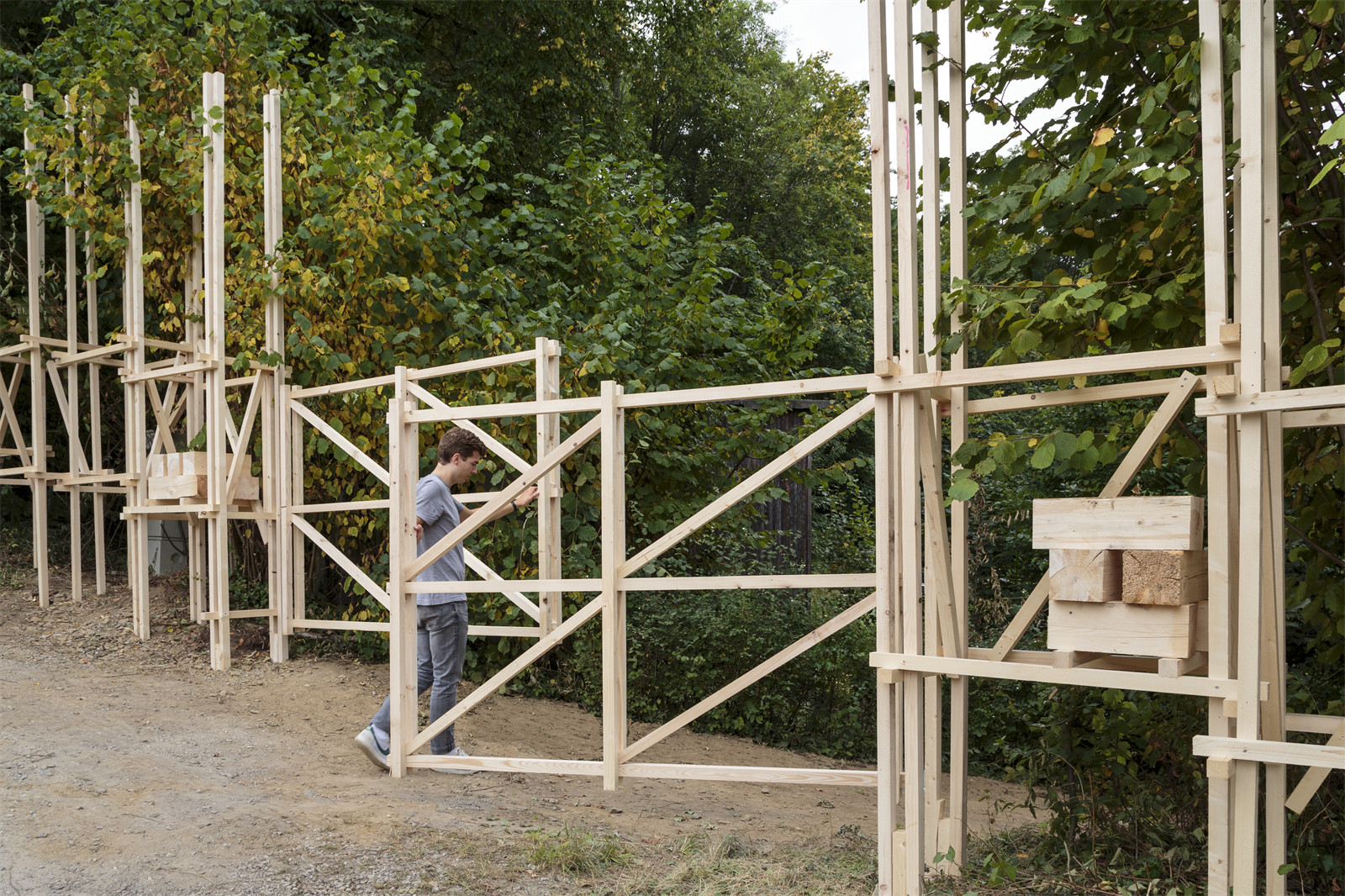
維也納童聲合唱團(tuán)校園占地 6 英畝�����,擁有豐富的自然資源���,一年四季都在精心維護(hù)和修剪�,盡管男孩們?cè)谛@的時(shí)間只有短短兩個(gè)月�。校園的維護(hù)工作會(huì)定期產(chǎn)出各種天然“廢料“,從干草�����、嫩草���、灌木�����、樹皮到樹枝樹干�,這些資源曾在當(dāng)?shù)剞r(nóng)業(yè)經(jīng)濟(jì)中具有特定的價(jià)值。
The six-acre property of the Vienna Boys' Choir is full of natural resources that are carefully being maintained and manicured throughout the four seasons of the year regardless of the short period of two months when the boys are actually at the Campus. The upkeeping of the estate is regularly producing a set of natural "waste" materials, from hay, grass, shrubs and bark to branches and logs, that used to contain specific values in the local farming economy.
▼交換柵欄
Exchange Fence ? Paul Sebesta
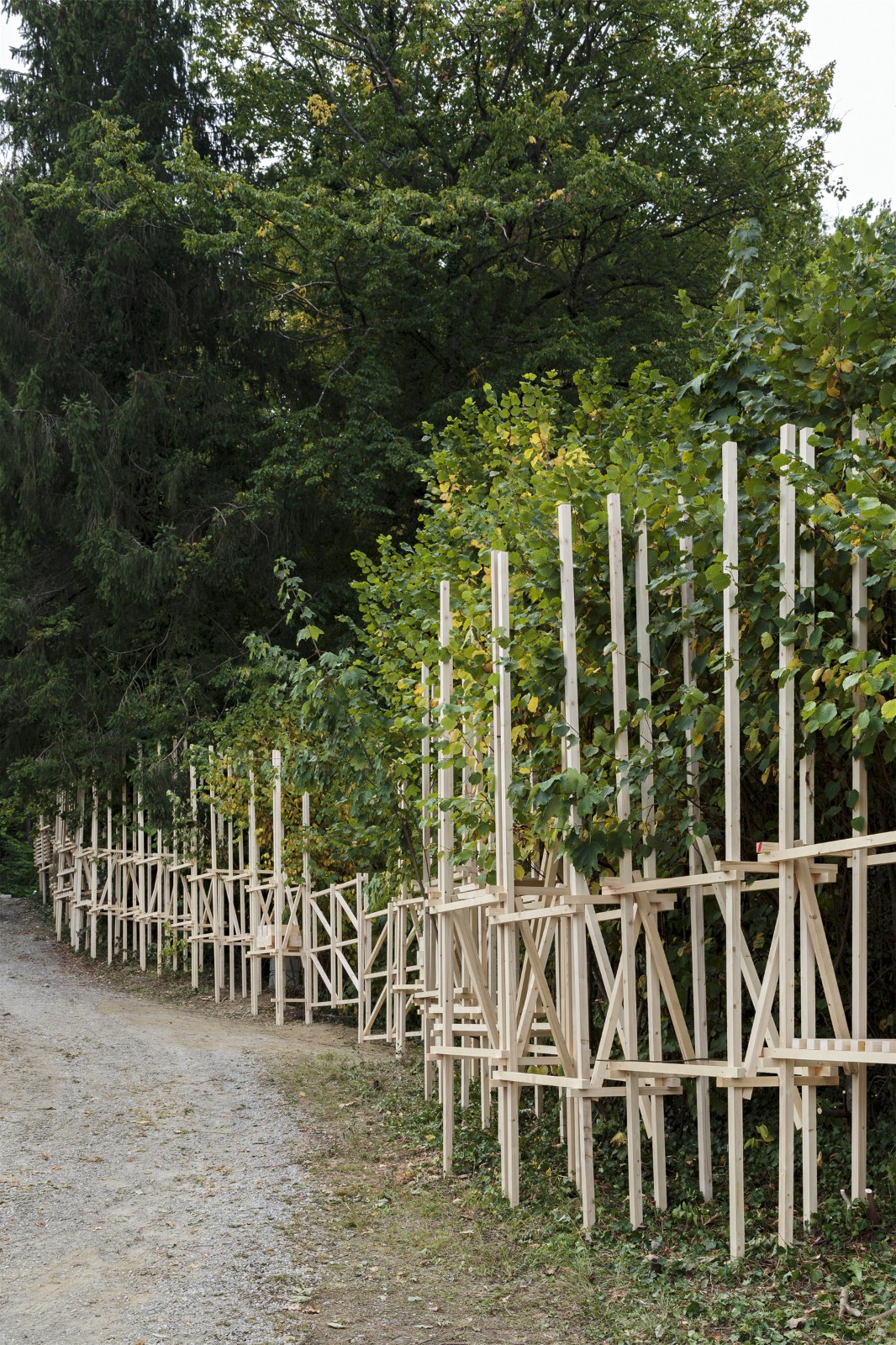

設(shè)計(jì)師采用了可持續(xù)性的方式來(lái)管理土地�,建筑物用以存儲(chǔ)和交換校園里的殘留“廢料”,從而改善鄰里關(guān)系�����,促進(jìn)交流�。
In an approach to sustainably resolve land management issues, the intervention looks at the Campus' residue material as a resource for stimulating neighbouring relationships through storage and trade of those materials.
▼交換柵欄的連接結(jié)構(gòu)
Connecting Structure of Exchange Fence ? Paul Sebesta
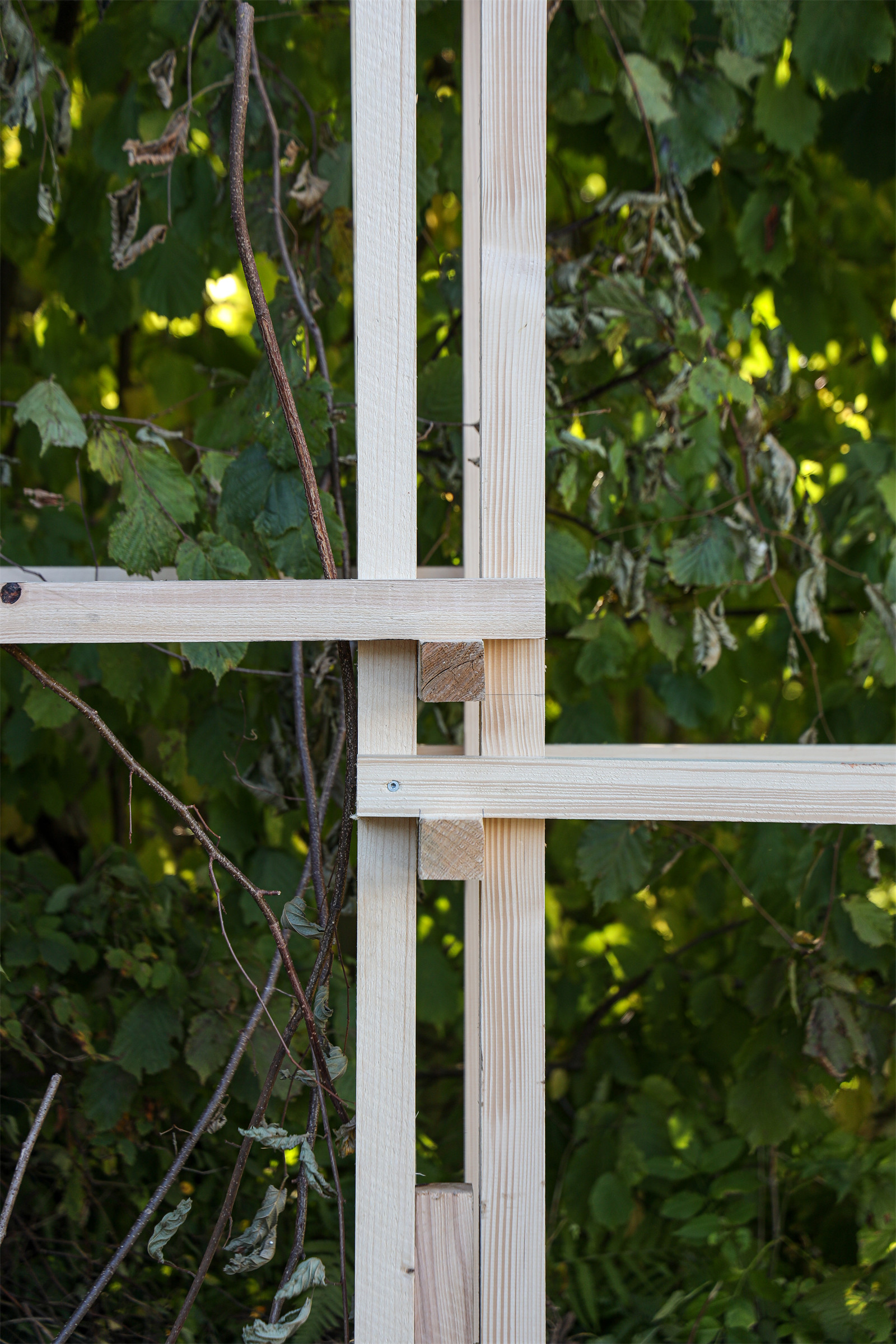
該項(xiàng)目設(shè)計(jì)出一款新型柵欄:“深型柵欄”����,取代了原來(lái)的單功能分隔柵欄,并融入了這一常規(guī)建筑物所具有的在環(huán)境��、社會(huì)和經(jīng)濟(jì)層面上的潛在價(jià)值���。這種三維結(jié)構(gòu)除了仍是場(chǎng)地的屏障外�����,還能作為存儲(chǔ)系統(tǒng)���、店面和校園全年生產(chǎn)的天然廢料的市場(chǎng)��。它旨在激發(fā)新的交換�,并就季節(jié)性的維護(hù)日程�����、廢料和土地私有化概念進(jìn)行探討�。
Replacing the existing monofunctional and dividing fence and recognising its typology's contextual, social and economic potential, the project proposes a different type: a 'deep fence'. This three-dimensional structure still functions as a barrier to the site, which additionally operates as a storage system, storefront and marketplace of natural waste materials produced at the Campus throughout the year. The publicly accessible structure aims to stimulate new rituals of exchange and debate on seasonal maintenance routines, waste and the notion of privatisation of land in the region.
凝視!原湖岸線的公共碼頭
Stare!Public Pier of a Former Shoreline
微型坐席“凝視�!”是一個(gè)具有私人視野的公共空間,讓觀眾一覽湖色���。
The micro auditorium, ‘Stare!’ is a public space with a private view, inviting the audience to a new lake vista.
▼“凝視�!”觀景臺(tái)
‘Stare!’, the Micro Auditorium ? Paul Sebesta
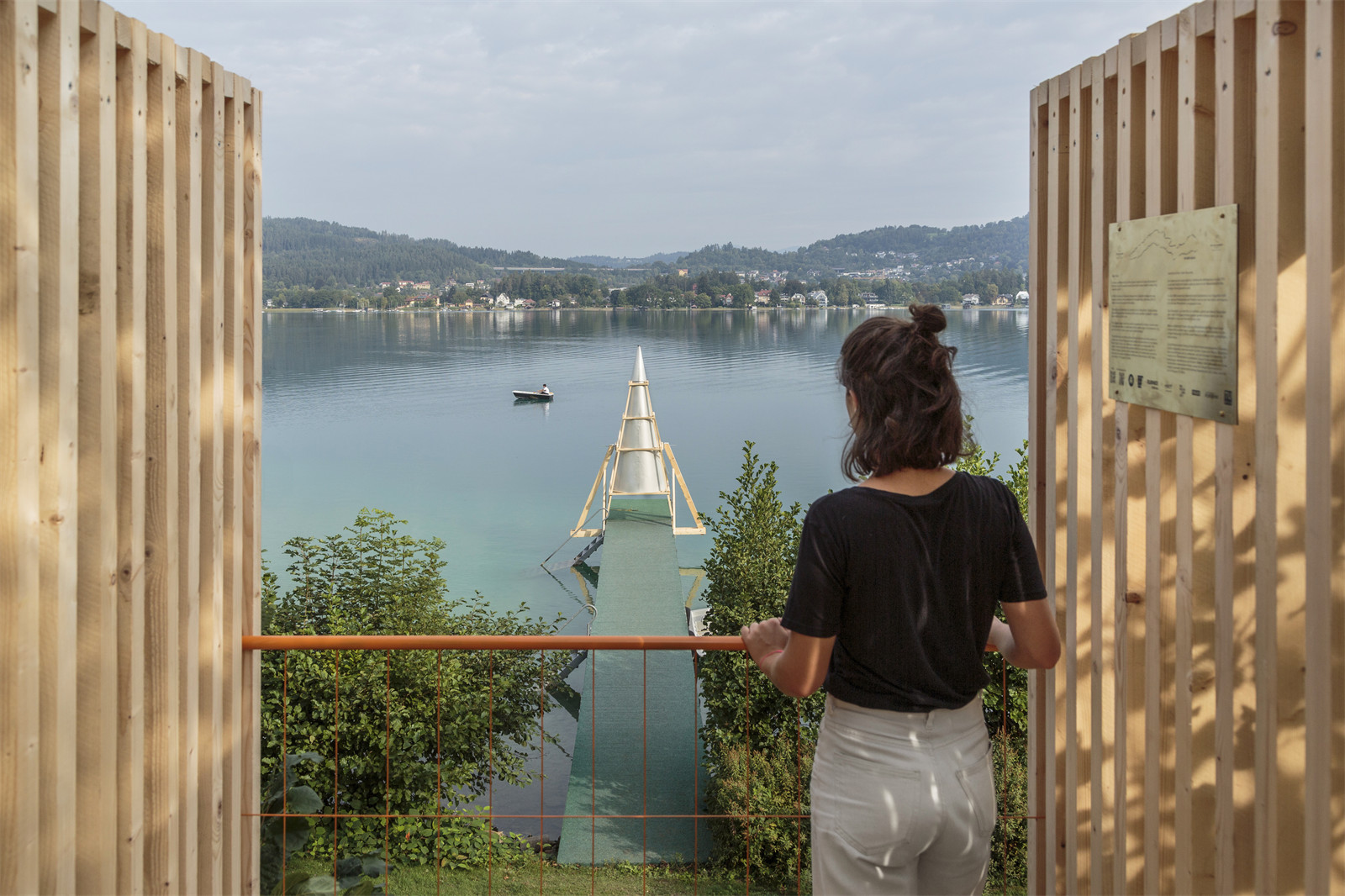
私有資產(chǎn)如何成為湖泊�、維也納童聲合唱團(tuán)和游客之間的可達(dá)性空間及教育空間?
How can a privately owned piece of property become a publicly accessible and educational interface between the lake, the Vienna Boys' Choir and the visitors?
▼“凝視��!”觀景臺(tái)
‘Stare!’, the Micro Auditorium ? AA nanotourism archive

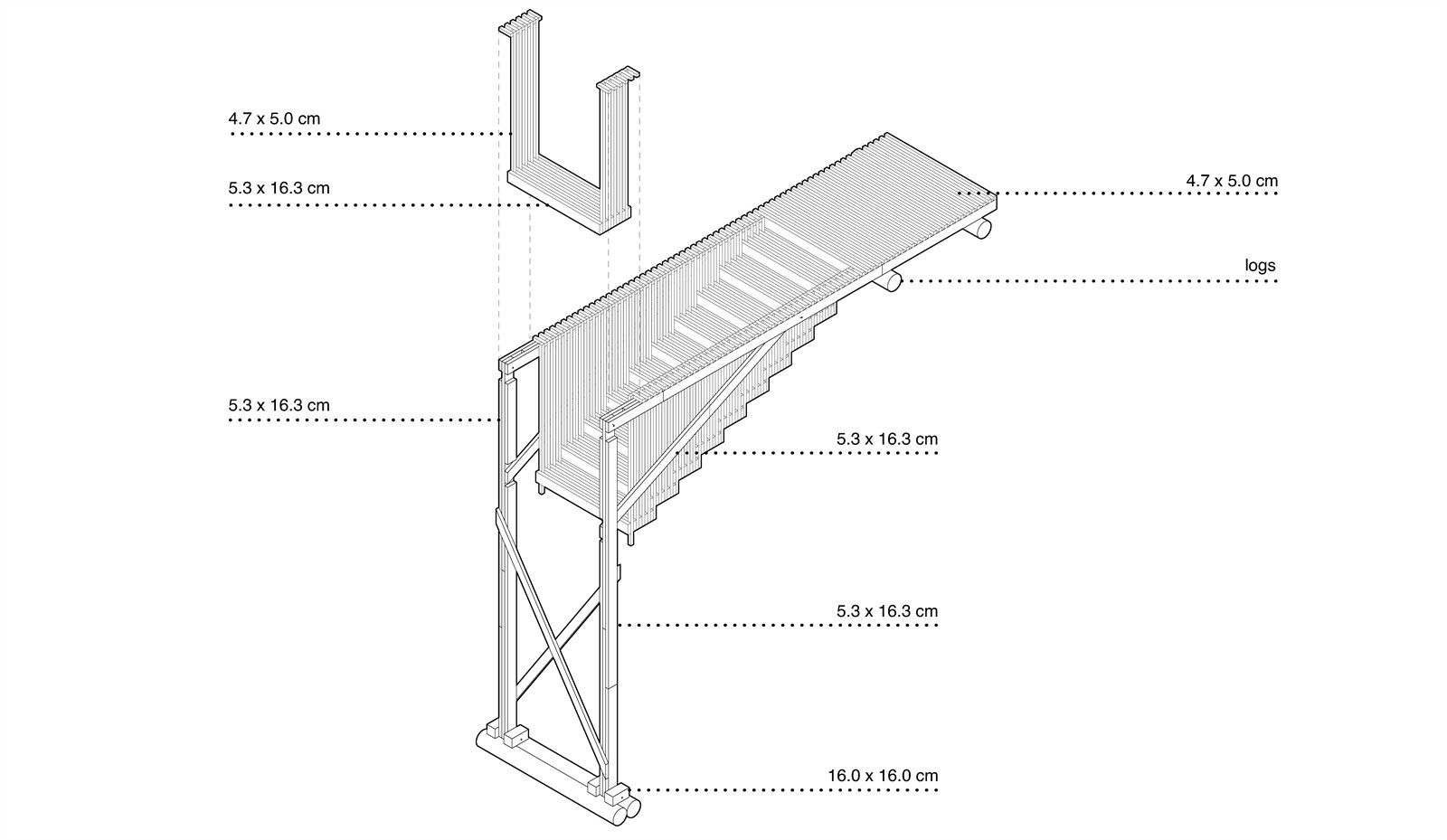
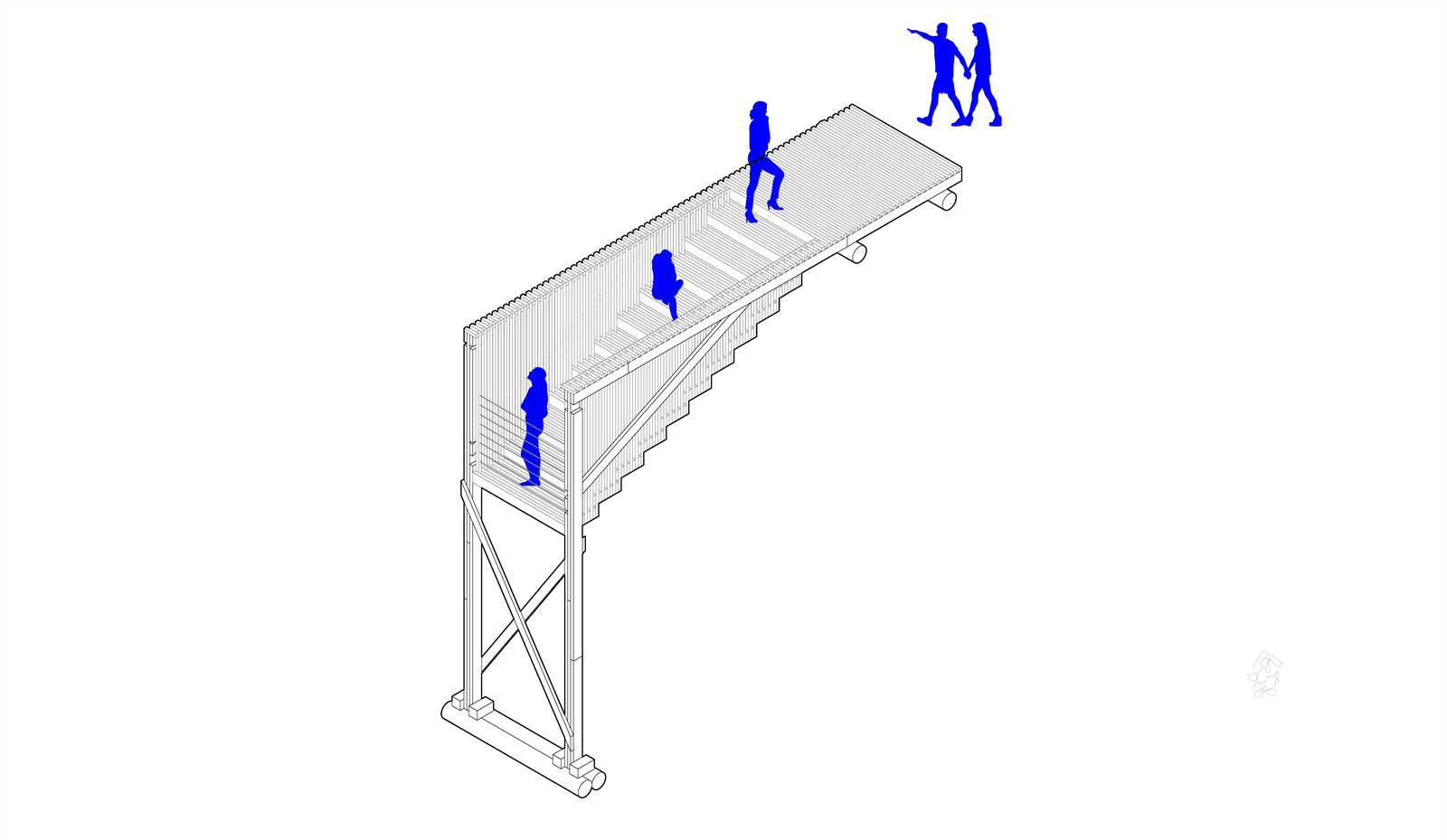
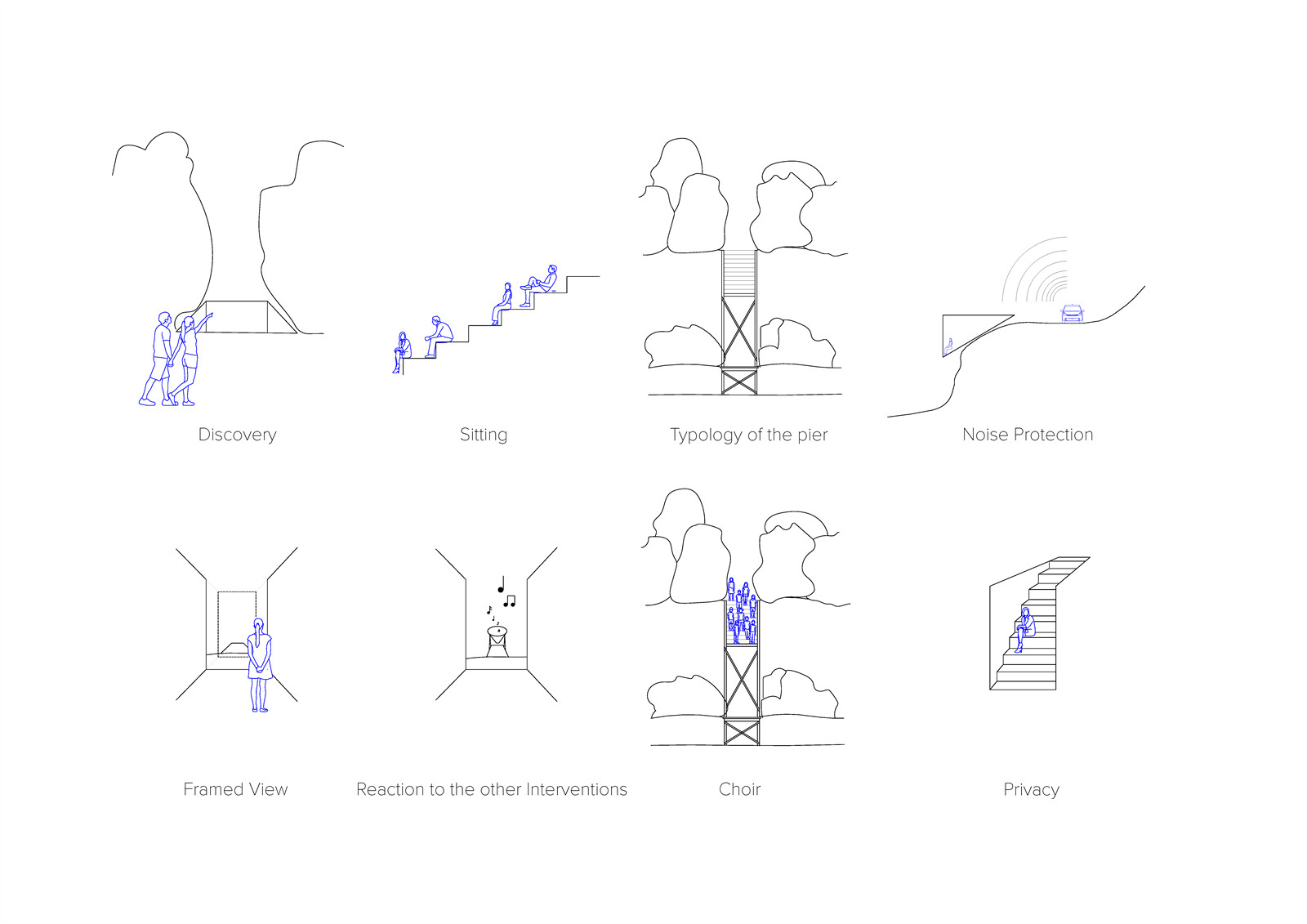
維也納童聲合唱團(tuán)校園位于湖邊最長(zhǎng)道路(1.3 公里)的中間��,這條道路沒有一處能讓人走近湖岸���。針對(duì)將湖景私有化而產(chǎn)生的過(guò)多圍欄式的岸邊房產(chǎn)����,該建筑物提供了多種選擇。 首先�����,它設(shè)計(jì)了一個(gè)公眾可用的觀景平臺(tái)����,使過(guò)往的游客能從僻靜的樓梯上欣賞湖景,拉近了觀者與湖水的距離�����,又遠(yuǎn)離了道路的嘈雜�。
Vienna Boys' Choir Campus is located halfway of the longest - 1.3 km long - stripe of the lake's perimeter road that offers not a single glance to the lake. Reacting to the excess of fenced-off shoreside properties that privatise the lake view, the intervention provides several alternatives. Firstly, it proposes a publicly accessible viewing platform that enables passing visitors to enjoy the lake's views from a secluded stairway by bringing the viewer closer to the water and away from the noisy road.
▼“凝視�!”觀景臺(tái)
‘Stare!’, the Micro Auditorium ? AA nanotourism archive
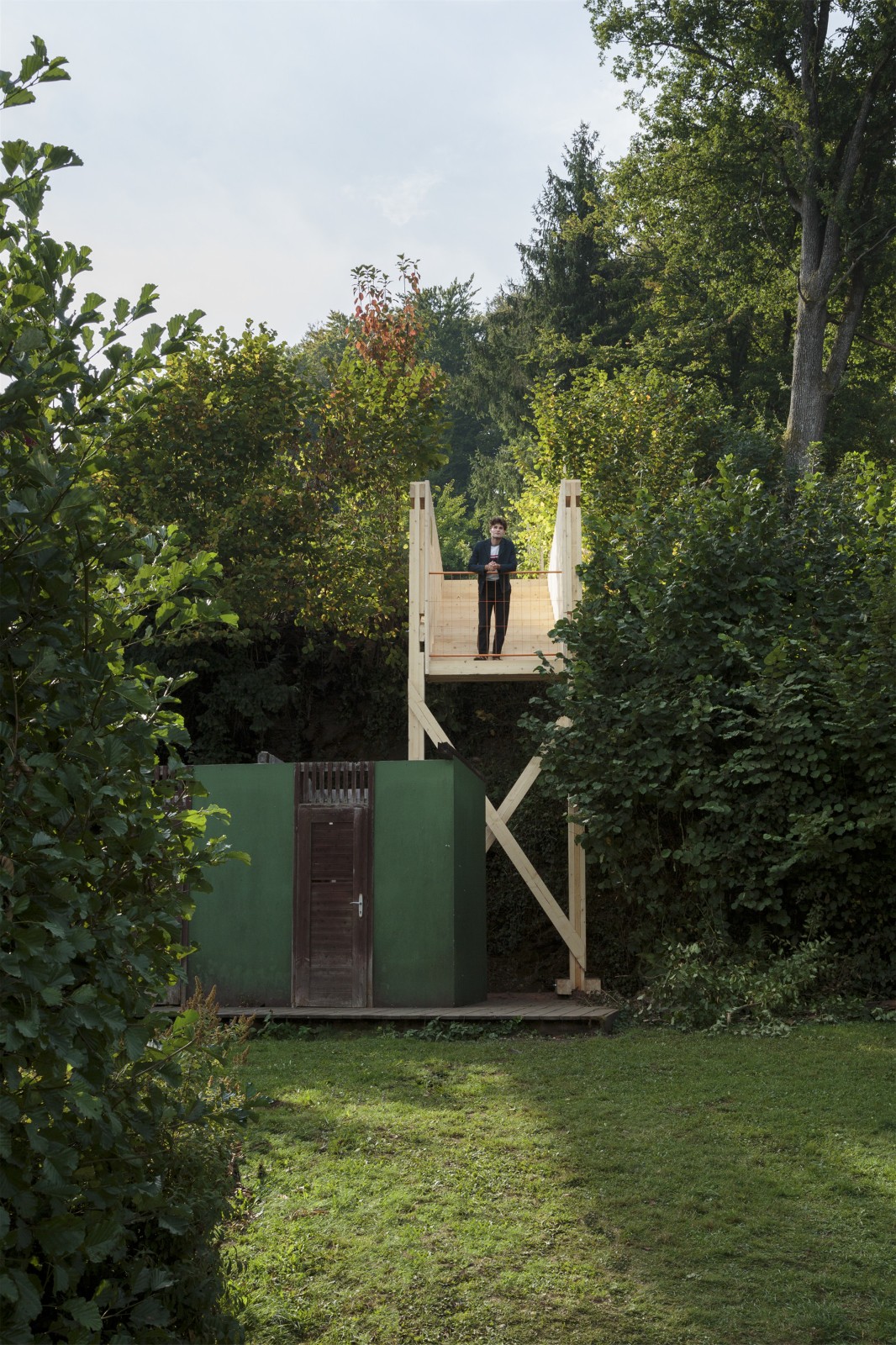
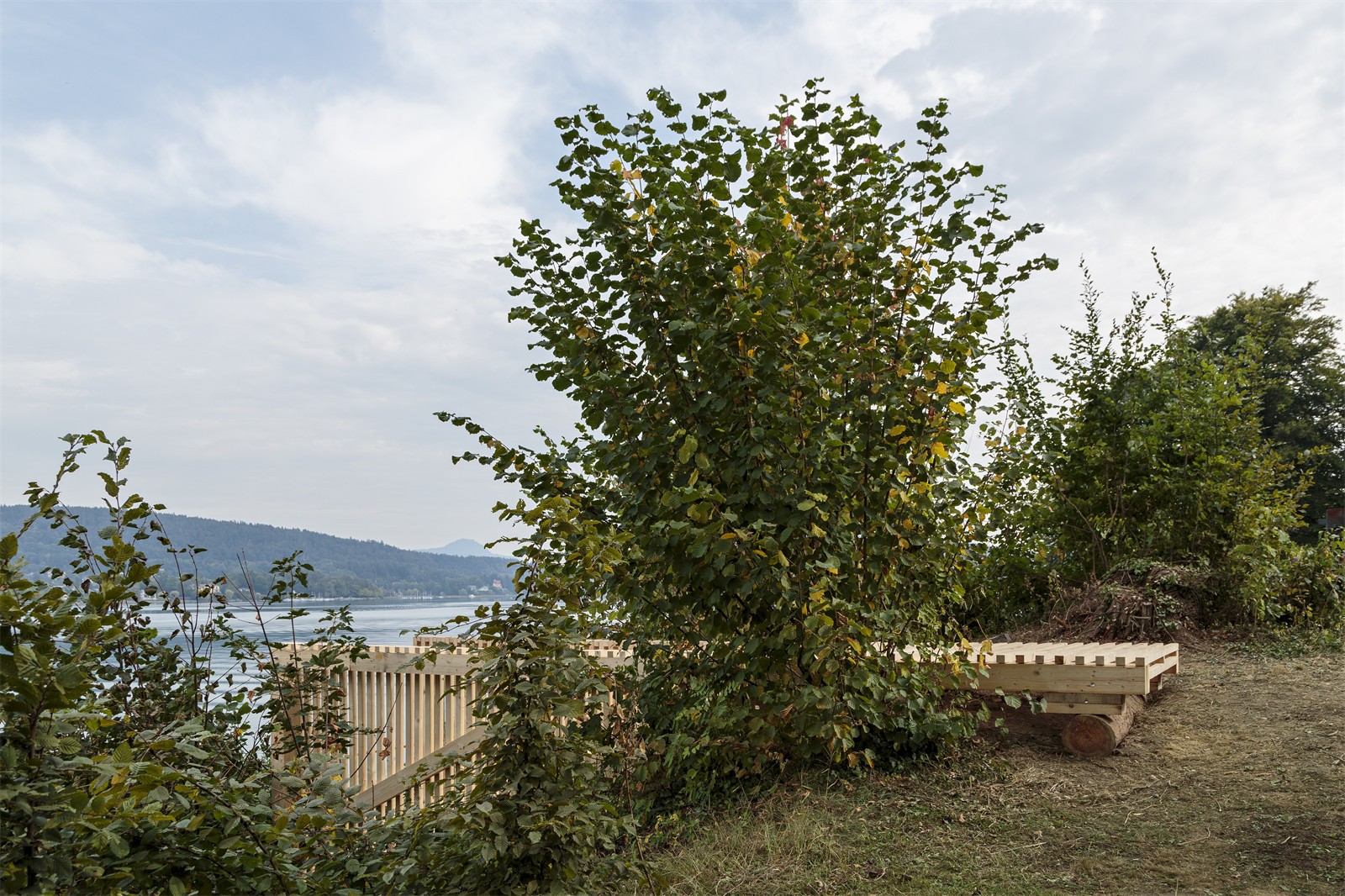
其次,自1770年人工降低水位后�,韋爾特湖原來(lái)的水岸線便消失了,該建筑物正好標(biāo)記了其初始位置���,是一個(gè)碼頭改造的范例�。因此���,它不僅能用于休憩�,還向游客訴說(shuō)著幾乎被遺忘的過(guò)去。
Secondly, as an altered exemplar of the pier typology, the project testifies about the former shoreline of Lake W?rth, which was lost in 1770 after the artificial lowering of the lake's water level. Therefore, the intervention is devoted to leisure, but it also educates visitors on almost forgotten past.
▼觀景臺(tái)結(jié)構(gòu)細(xì)部
the Detail of the Micro Auditorium ? AA nanotourism archive
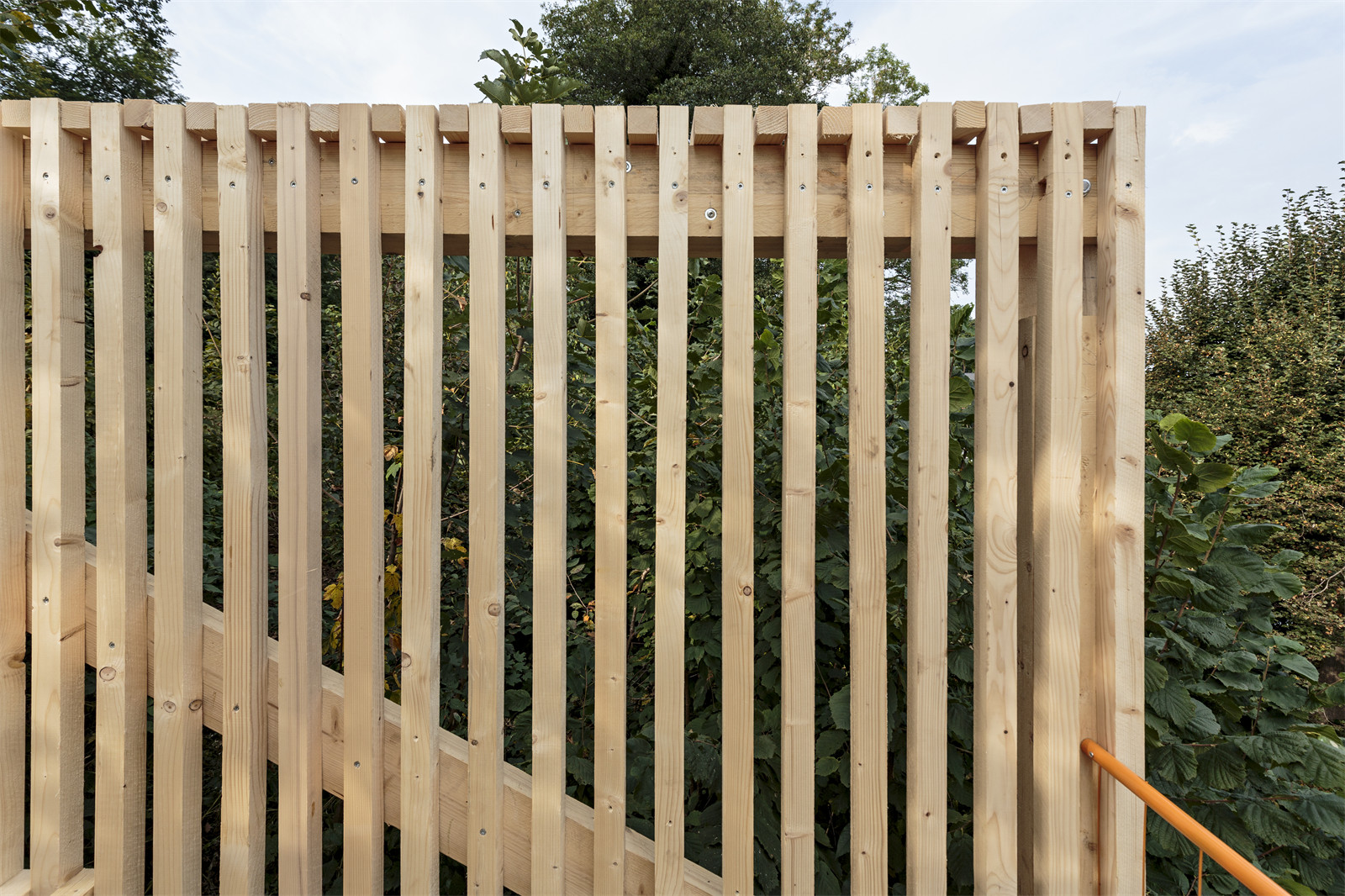
最后����,它也兼作禮堂,可容納 20 人欣賞現(xiàn)有校園碼頭上的表演�。碼頭和木制階梯軸向?qū)R,如同能自然延伸至碼頭����。該建筑物鼓勵(lì)維也納童聲合唱團(tuán)舉辦小型公共活動(dòng),以彰顯他們的演唱才華�,同時(shí)增強(qiáng)與韋爾特社區(qū)的關(guān)系。
Finally, it doubles as the auditorium that can host an audience of 20 people taking part in the performance happening on the existing campus' pier. The pier and the wooden stair-like structure are axially aligned to work together as one, spatially correlating setting. Opening up the possibility of hosting a performance encourages the Vienna Boys' Choir members to stage small public events to reinforce their singing identity and relation to the W?rthersee's community.
▼在觀景臺(tái)上休憩
Rest the Micro Auditorium ? AA nanotourism archive
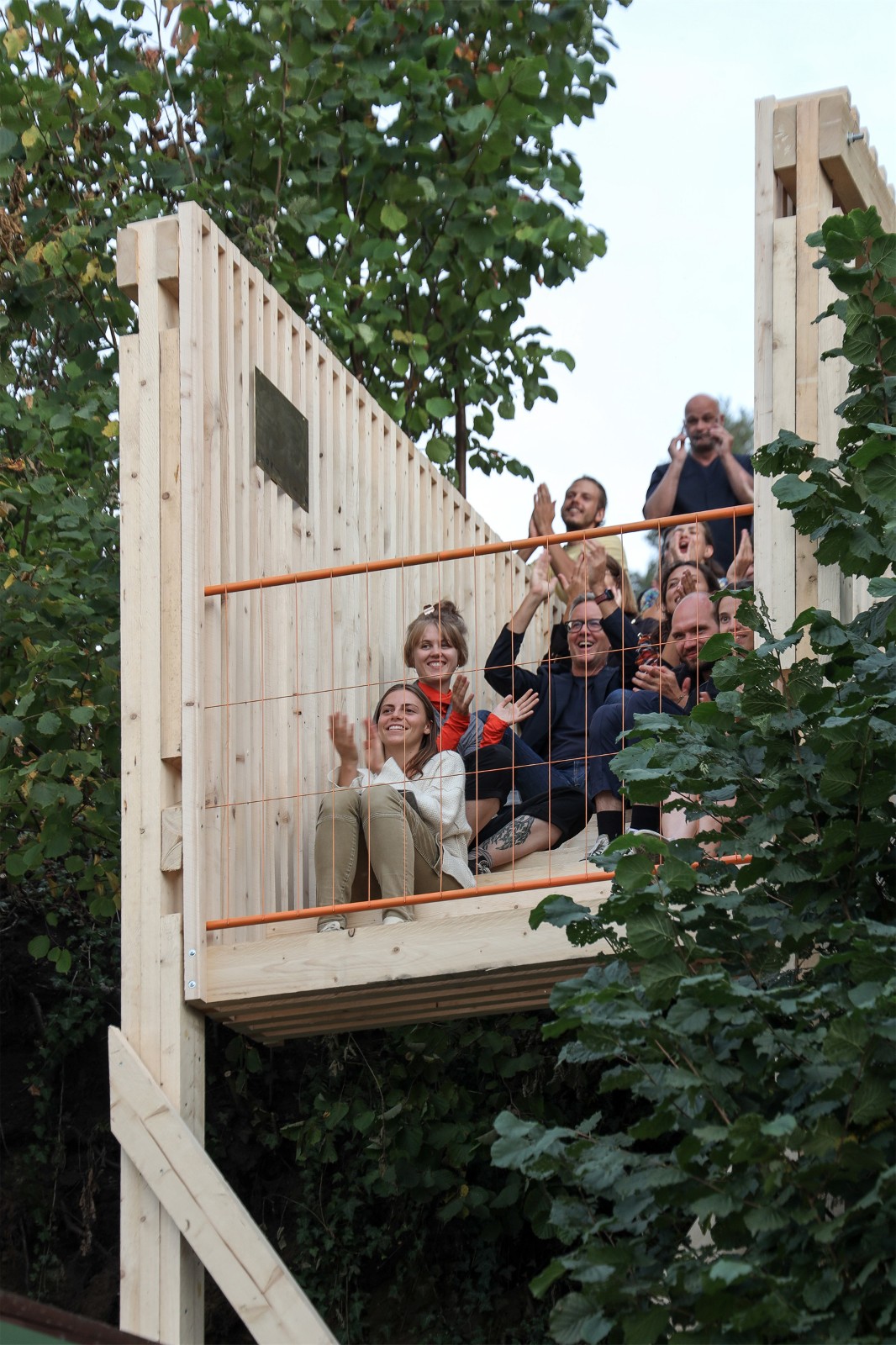
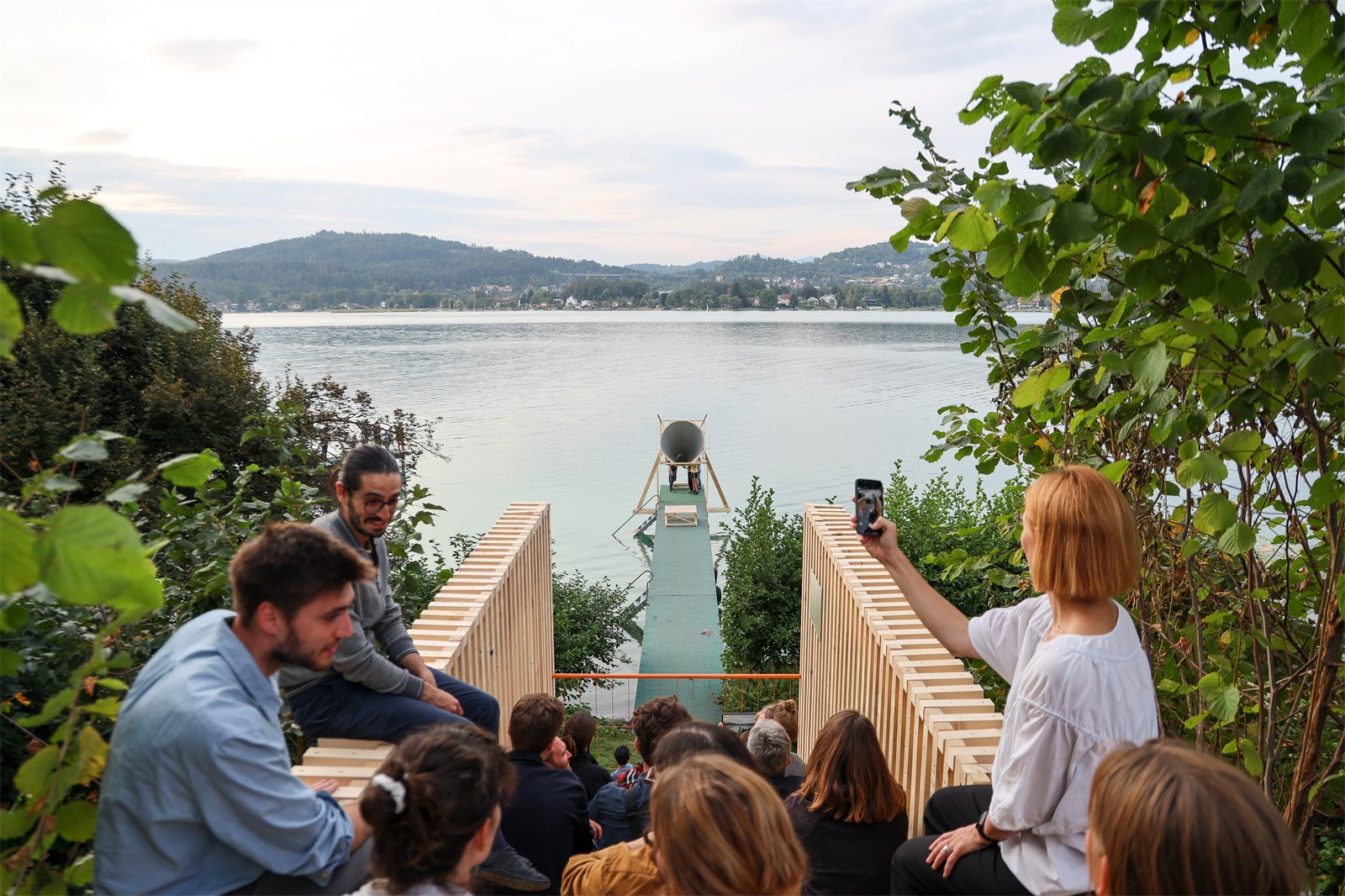
聲炮:放大當(dāng)?shù)匚幕穆曇?/h3>
Sound Cannon:Amplifying the Local’s Culture Voice
▼“聲炮”被安裝在既有的木制碼頭上
The Sound Cannon is fixed on the existing wooden pier of the Campus ? Paul Sebesta
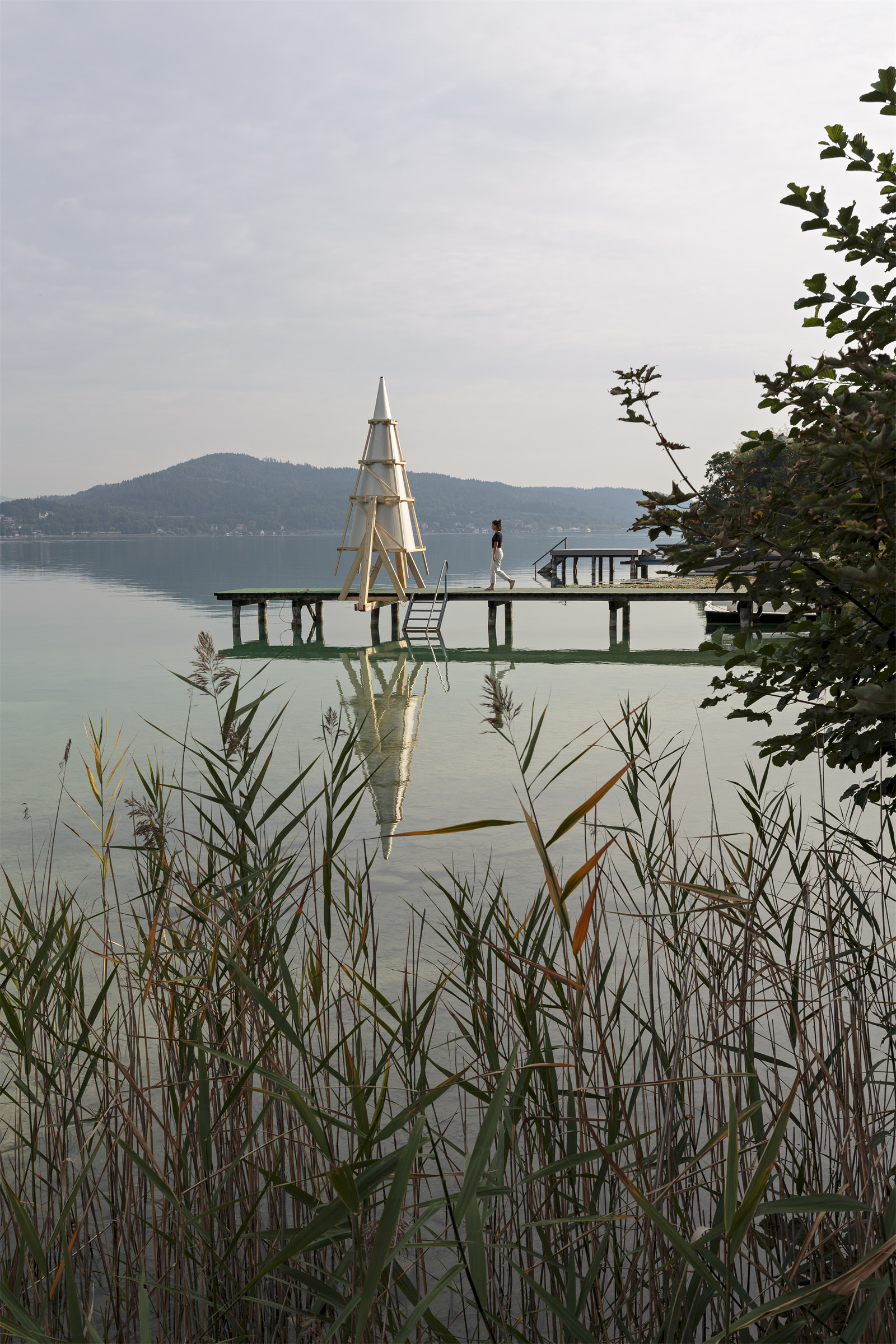
站在齊膝深的湖中唱歌���,“聲炮”是韋爾特湖獨(dú)特的聲樂(lè)文化放大器��。
Standing knee–deep in the lake and singing, ‘Sound Cannon’ is an analogue amplifier of the unique vocal culture of W?rthersee.
▼“聲炮”分析圖
Sound Cannon – Diagram ? AA nanotourism archive
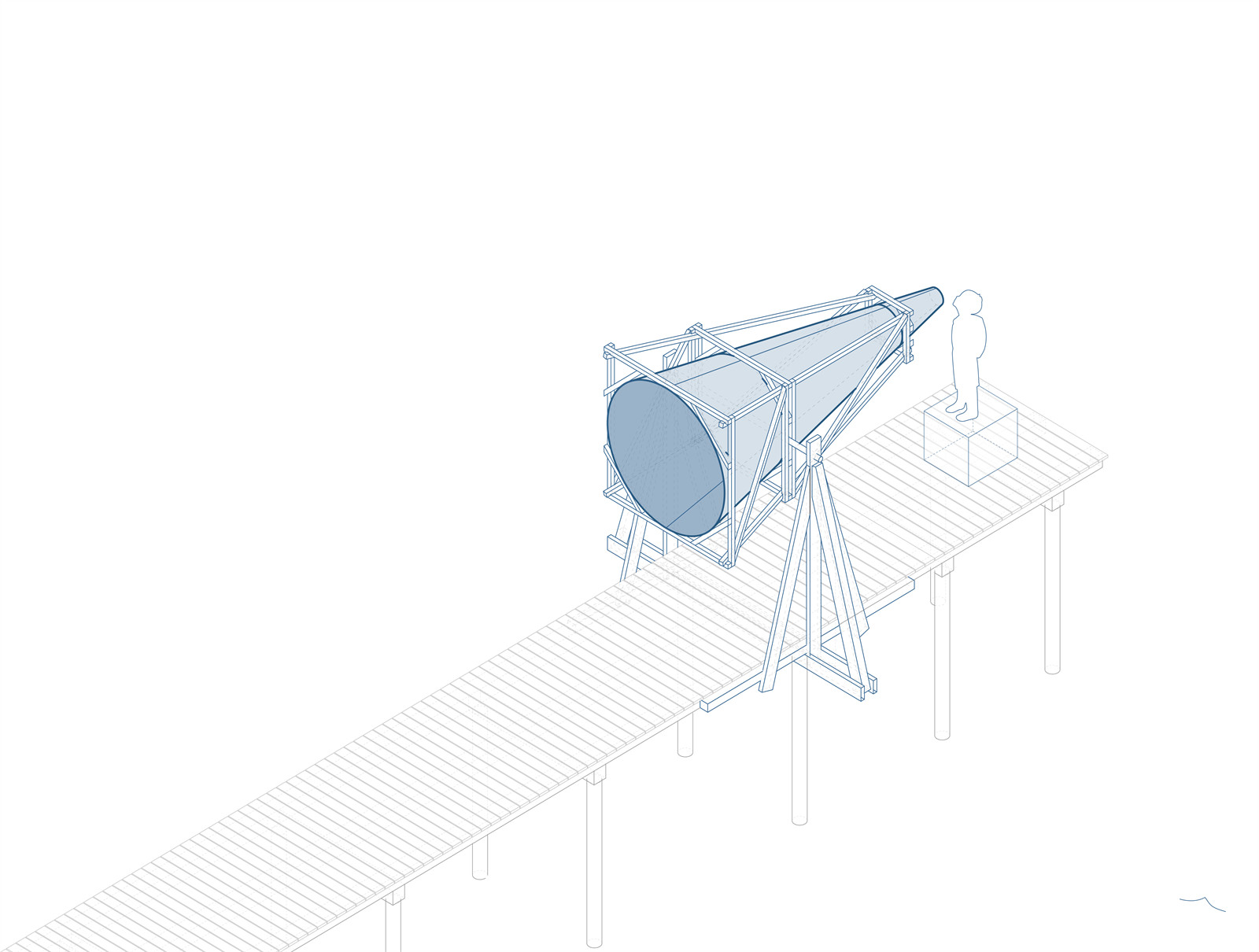
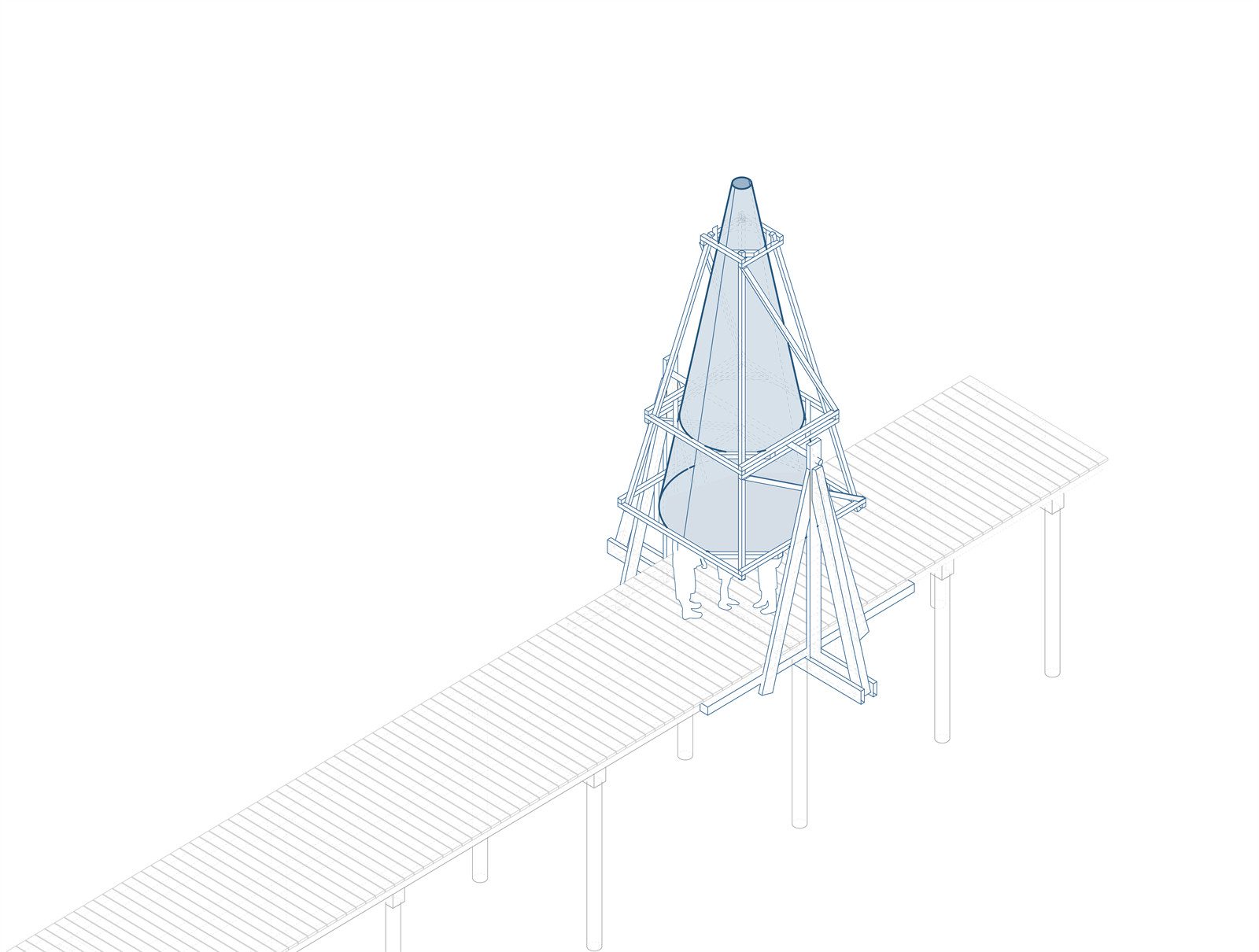


如何讓歌聲與音樂(lè)遍及整個(gè)韋爾特湖�����,以促進(jìn)維也納童聲合唱團(tuán)與公眾開展新形式的文化交流����?
How can singing and music be spread throughout lake W?rthersee to facilitate new forms of cultural exchange between the Vienna Boys' Choir and the general public?
▼可翻轉(zhuǎn)的喇叭
The Horn is a Kinetic, Flipping Device ? Paul Sebesta
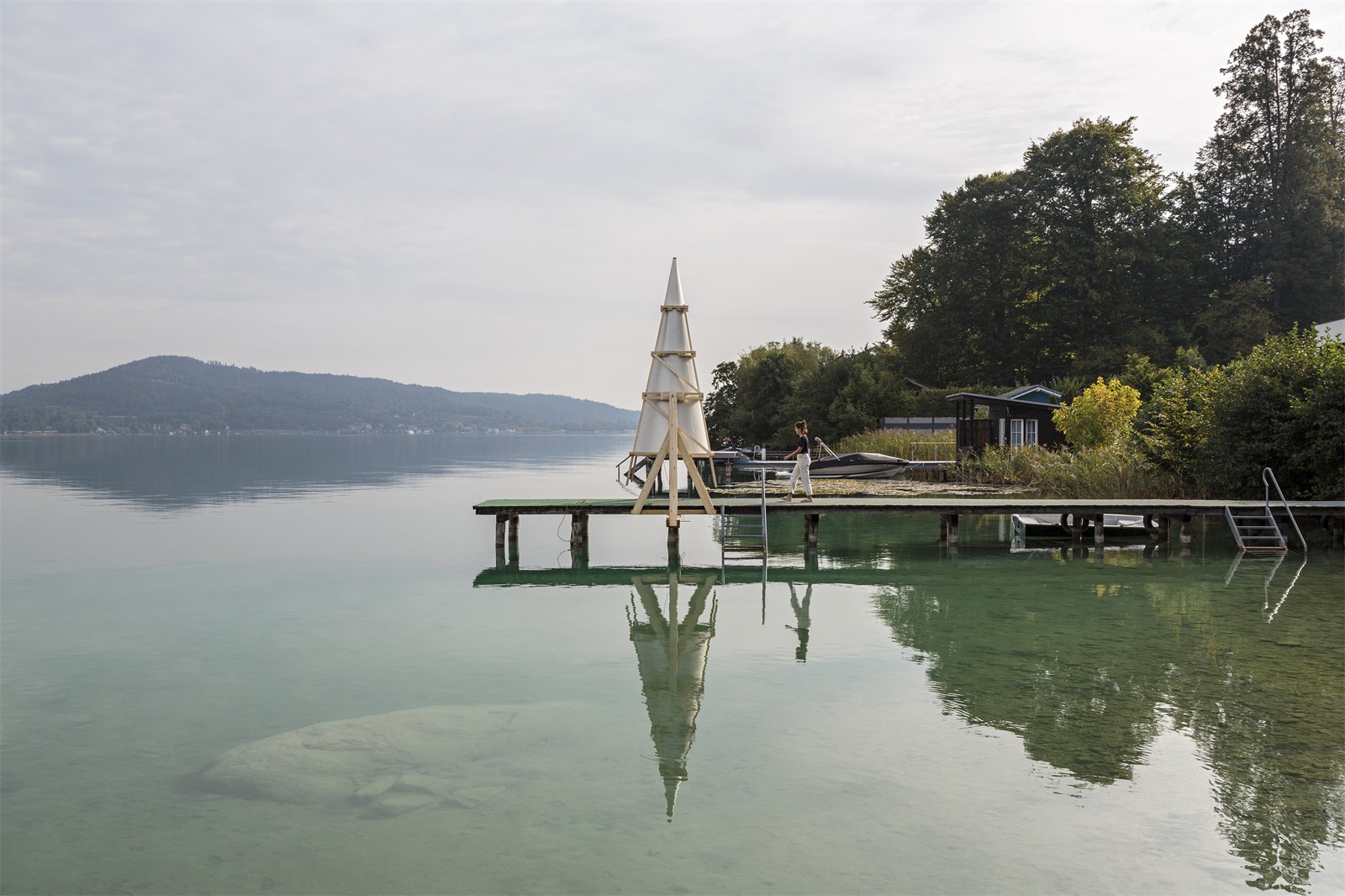
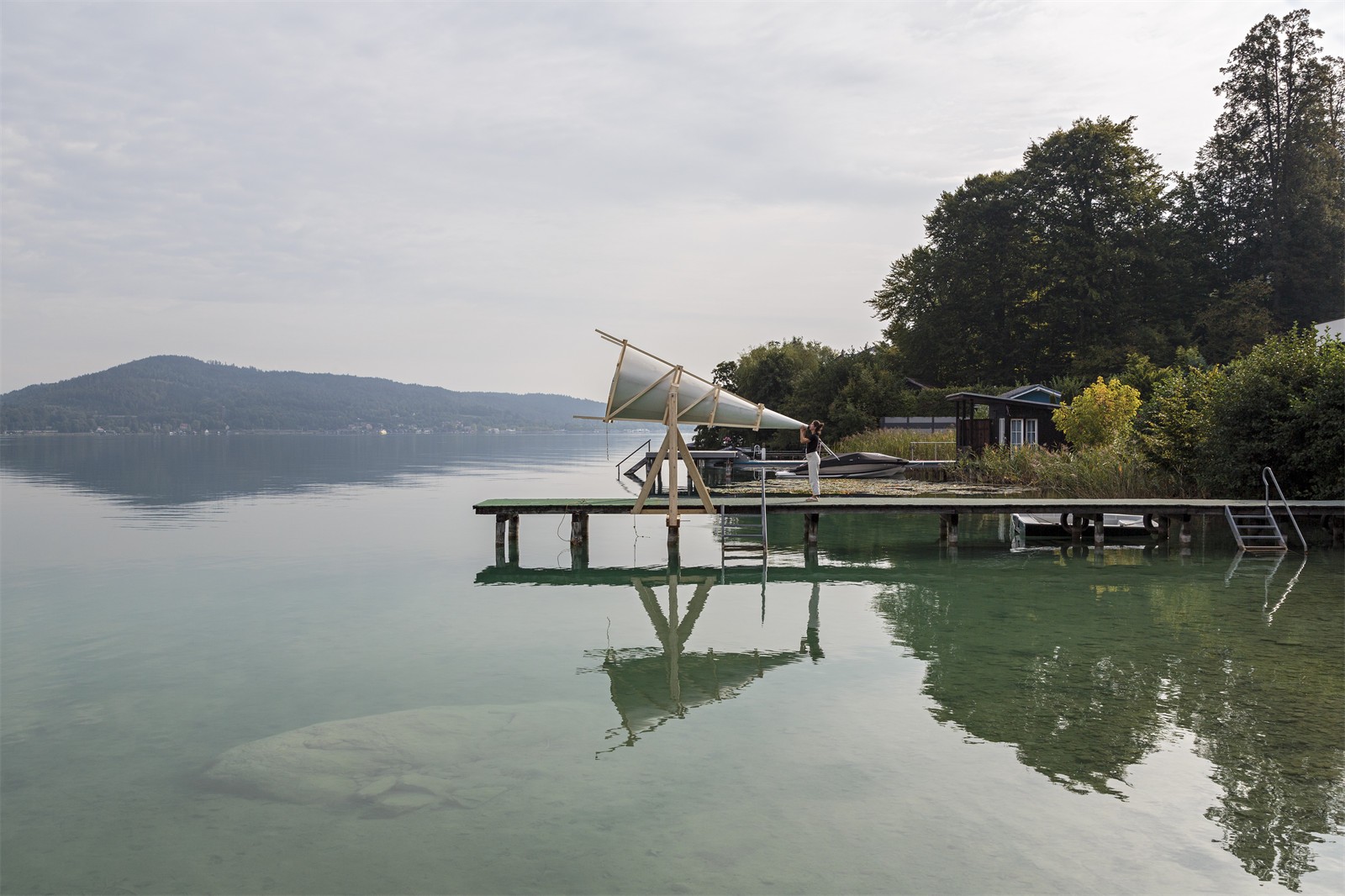
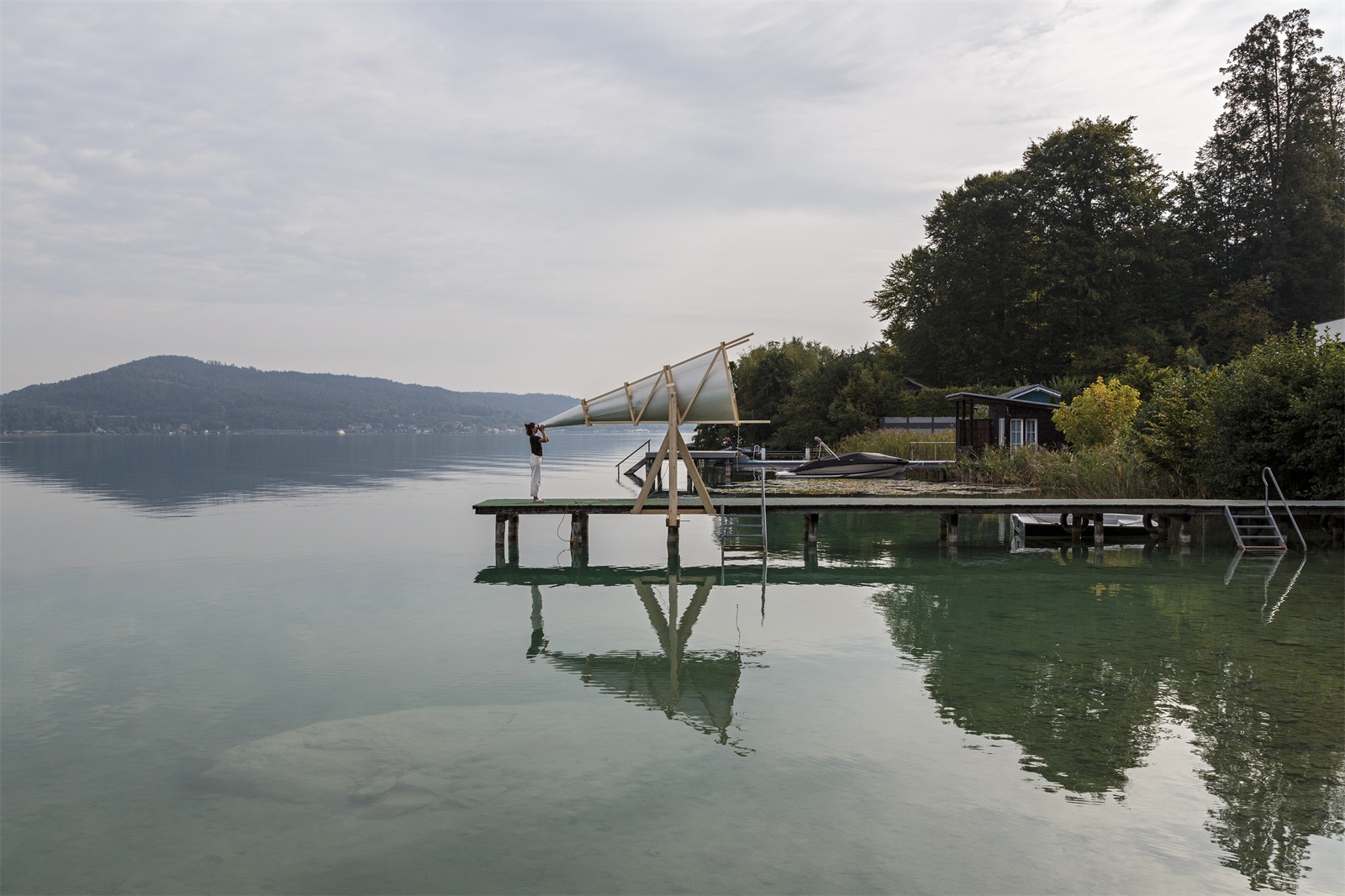

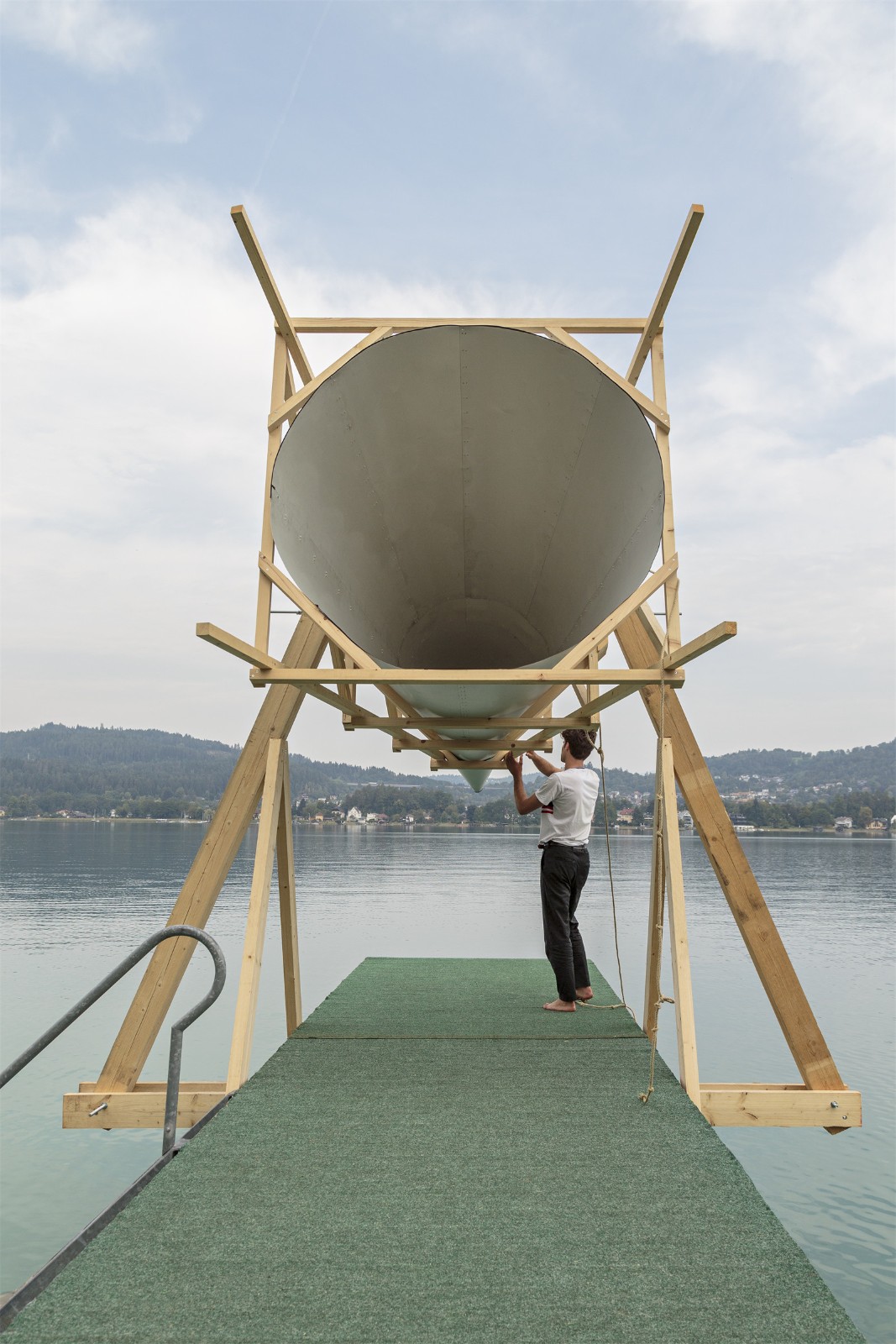
該湖是韋爾特地區(qū)居民的共享空間。憑借其聲效與空間品質(zhì)�,它已經(jīng)是一個(gè)天然的聲音發(fā)射器,可在一天中的不同時(shí)段來(lái)體驗(yàn)穿越湖面的豐富聲音����。另一方面,維也納童聲合唱團(tuán)因其歌聲而享譽(yù)國(guó)際�,但湖邊的社區(qū)大多還不知道他們的存在。
The lake is a shared space of the W?rthersee area inhabitants. With its acoustic and spatial qualities, it already functions as a natural sound transmitter, offering multiple experiences of sound travelling across the lake throughout different times of the day. On the other hand, Vienna Boys' Choir is internationally well known for their singing, but the lake's community is mostly unaware of their presence.
▼聲炮細(xì)節(jié)
the Detail of the Sound Cannon ? Paul Sebesta
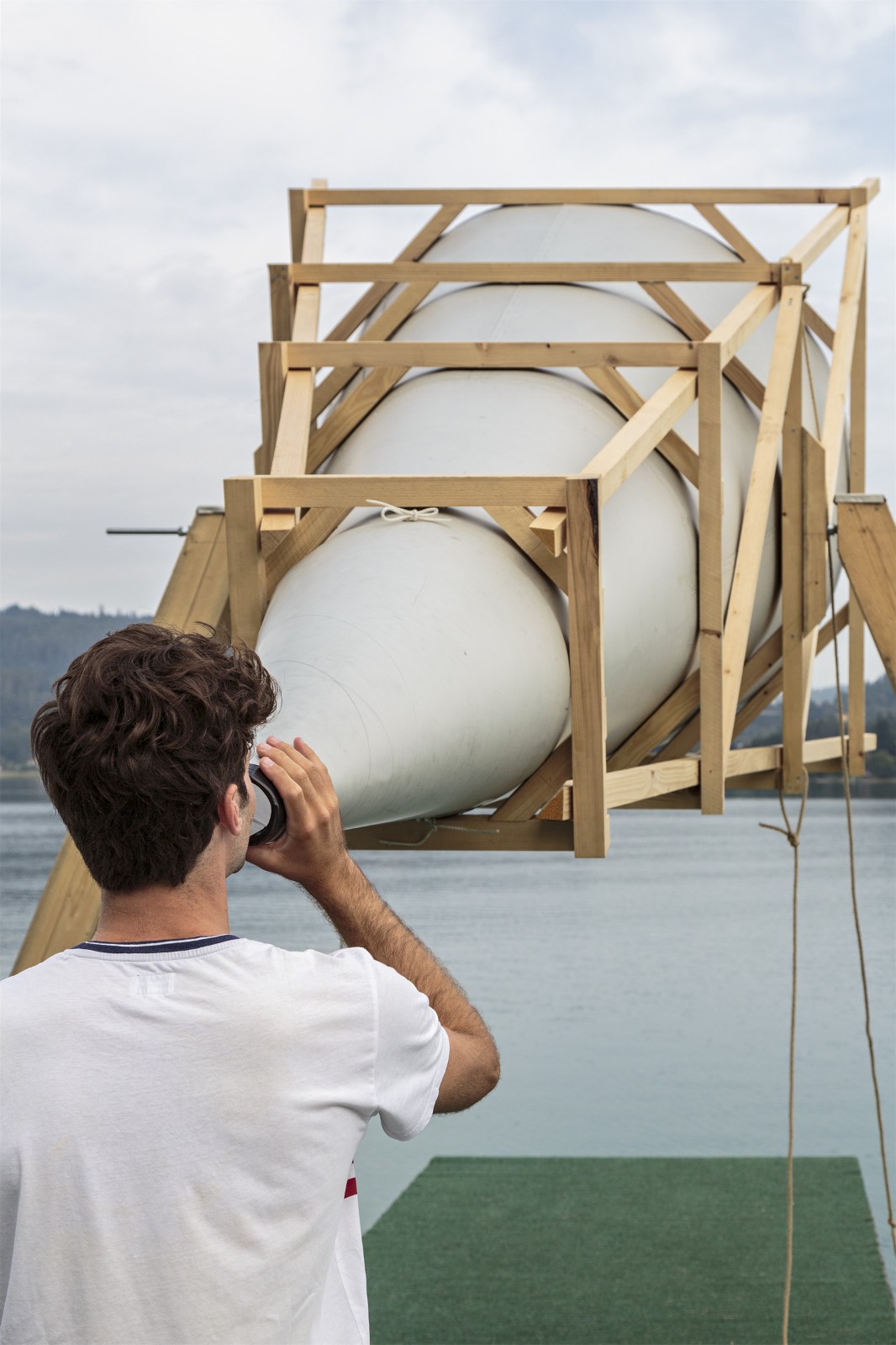
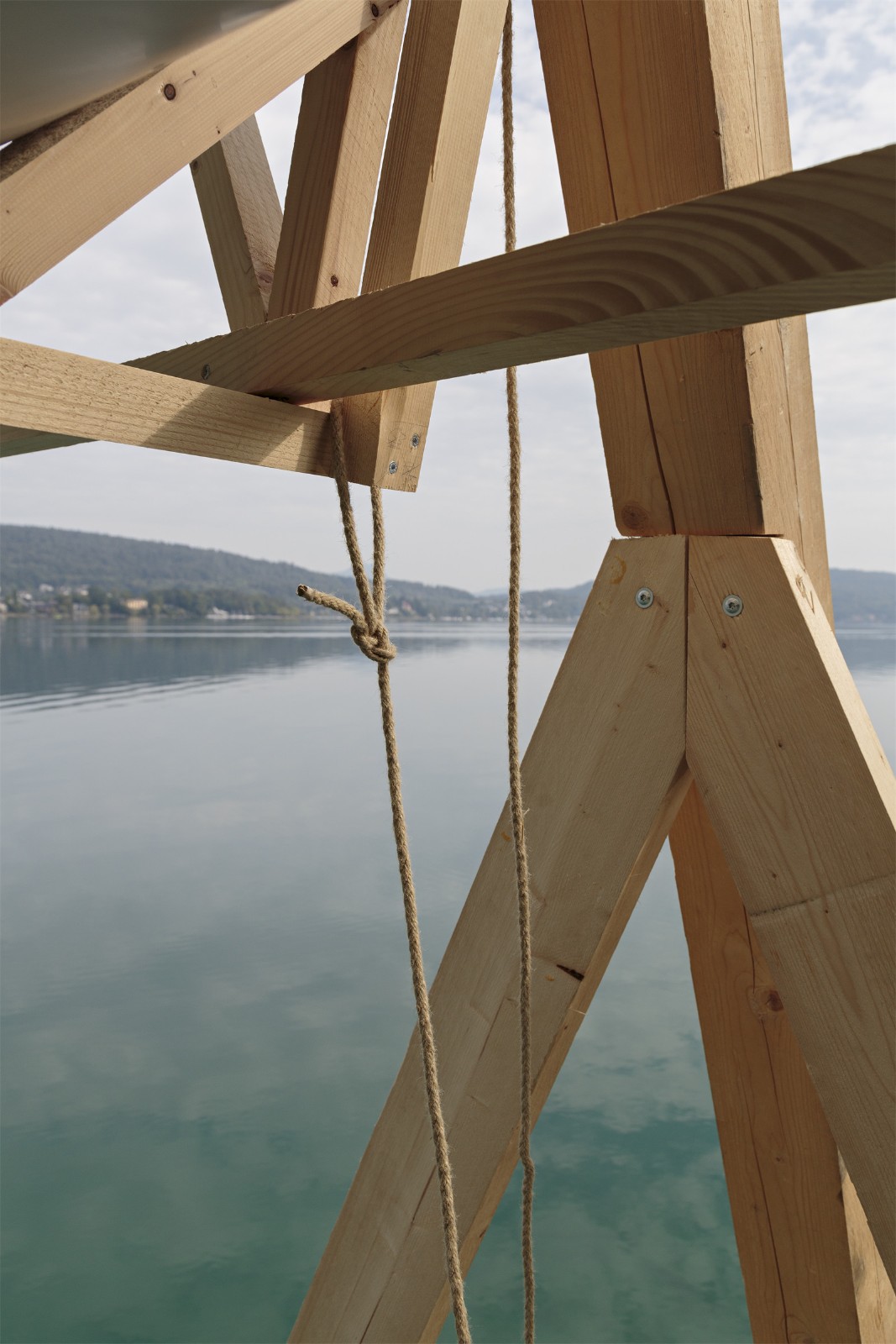
懷著為合唱團(tuán)發(fā)聲的愿心��,該建筑物將韋爾特湖想象成一個(gè)聲音的傳播者���,將維也納童聲合唱團(tuán)的高雅文化傳送給湖邊的社區(qū)�����。聲炮固定在校園現(xiàn)有的木制碼頭上,成為本地音樂(lè)文化的放大器�,為維也納童聲合唱團(tuán)、當(dāng)?shù)匾魳?lè)家和公眾提供了新的互動(dòng)形式�����。
With the ambition of giving the voice to the Choir, the project imagines the lake as a sound facilitator that distributes the high cultural identity of the Vienna Boys' Choir to the local community on the lake. Fixed on the existing wooden pier of the Campus, the Sound Cannon becomes an amplifier of the local music culture, providing an interaction point between the Vienna Boys' Choir, local musicians and the public.
▼聲炮
the Sound Cannon ? Paul Sebesta
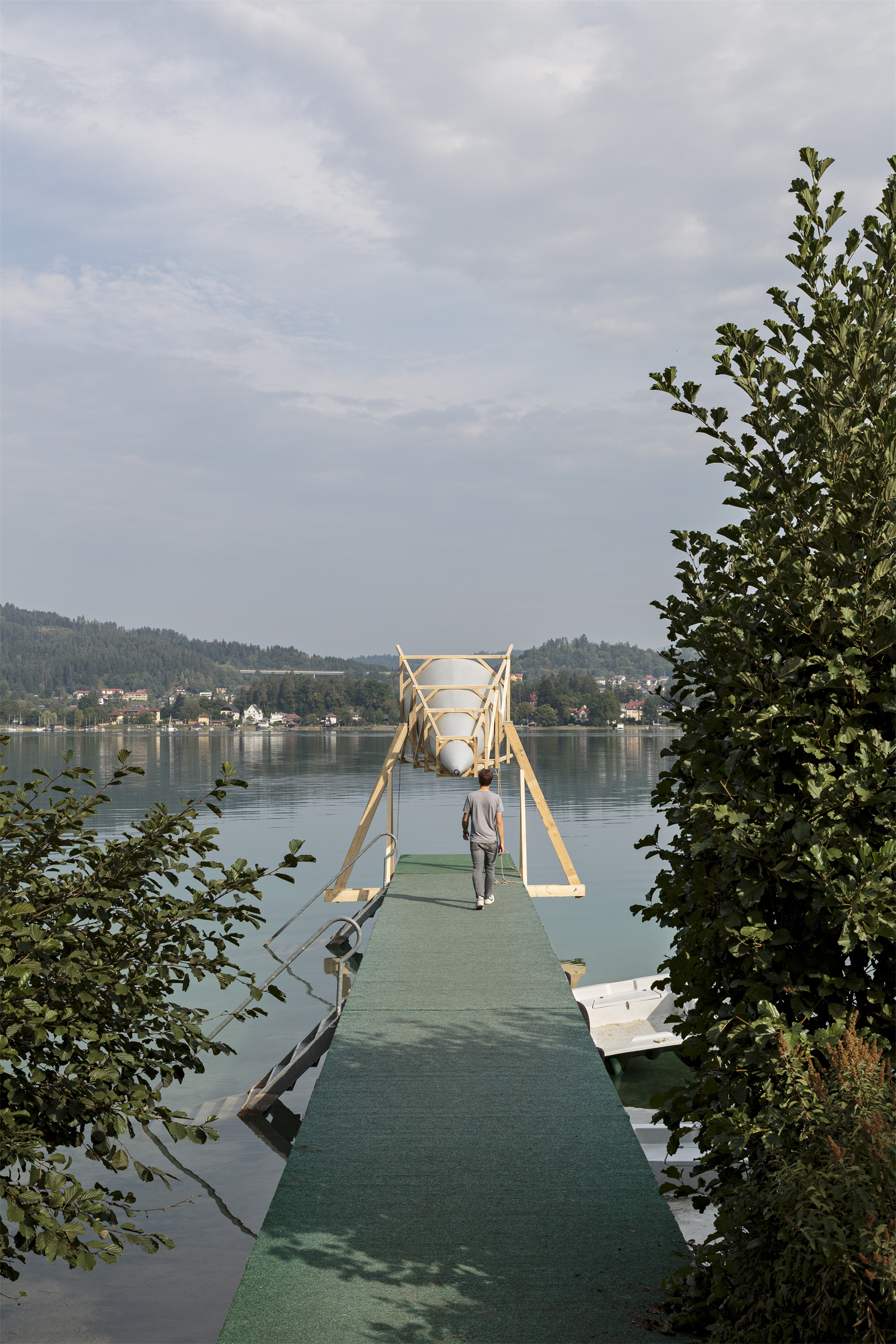
喇叭是一個(gè)動(dòng)態(tài)的翻轉(zhuǎn)裝置�����。它既可以面向湖面,將聲音傳播給湖泊社區(qū)的“偶然”聽眾����,也可以面向維也納童聲合唱團(tuán)校園的對(duì)外開放區(qū)域,并向觀眾表演�。聲炮所創(chuàng)生的新型表演方式,豐富了韋爾特的音景文化���,同時(shí)也為進(jìn)行各類音樂(lè)實(shí)驗(yàn)提供了機(jī)會(huì)���。
The horn is a kinetic, flipping device. It can either face the lake and distribute the sound to 'accidental' listeners of the lake's community or face the land to perform to an audience on the Vienna Boys' Choir publicly accessible plot. Used in new performative rituals, the Sound Cannon contributes to the soundscape of W?rthersee and allows for musical experimentation that is a long tradition of the lake's history.
▼聲炮為韋爾特的音景做出了貢獻(xiàn)
the Sound Cannon contributes to the soundscape of W?rthersee ? Paul Sebesta

項(xiàng)目信息
項(xiàng)目名稱:四季有聲的文化校園
項(xiàng)目地點(diǎn):奧地利維也納童聲合唱團(tuán)夏季宿舍
設(shè)計(jì)公司:AA nanotourism Visiting School
設(shè)計(jì)時(shí)間:2021.8.31-2021.9.15
建成時(shí)間:2021.8.31-2021.9.15
圖片來(lái)源:AA nanotourism archive,Paul Sebesta
版權(quán)聲明:本文版權(quán)歸原作者所有���,請(qǐng)勿以景觀中國(guó)編輯版本轉(zhuǎn)載�����。如有侵犯您的權(quán)益請(qǐng)及時(shí)聯(lián)系�,我們將第一時(shí)間刪除����。
投稿郵箱:info@landscape.cn
項(xiàng)目咨詢:18510568018(微信同號(hào))
 京公海網(wǎng)安備 110108000058號(hào)
京公海網(wǎng)安備 110108000058號(hào)





































